Journey: Band Members and History
Olaf Herschbach / Getty Images
- Top Artists
- Holiday Music
- Alternative Music
- Classical Music
- Country Music
- Rap & Hip Hop
- Rhythm & Blues
- World Music
- Heavy Metal
- Latin Music
For over 40 years, Journey has been one of the greatest classic rock bands of all time. The band has released 23 albums and 43 singles since 1975 and has reached worldwide album sales totaling more than 75 million.
But how exactly did Journey come to be? The San Francisco band got its start in 1973. Santana's former road manager, Herbie Herbert, recruited two of that band's members (Gregg Rolie and Neal Schon) and former Steve Miller Band bassist Ross Valory to form the Golden Gate Rhythm Section—the band that later became Journey.
The original Journey band members included Gregg Rolie on vocals and the keyboard, Neal Schon on guitar and vocals, George Tickner on guitar, Ross Valory on bass and vocals, and Prairie Prince on drums.
Their first album was released in 1975 and established the band's jazz-influenced progressive rock sound. After several personnel changes, Steve Perry signed on as lead vocalist, launching the band's greatest period of commercial success from the late 1970s through the mid-1980s. Many people remember Steve as the face of the band.

The Best Album
The group's seventh album, Escape, produced three hit singles and sold over 9 million copies. In addition to its commercial success, the album also received critical acclaim that has eluded them through most of their existence. Arguably, the most popular song put out by Journey is "Don't Stop Believin'." Originally released in 1981, the song became a Top 10 hit on the Billboard Hot 100, debuting at No. 9. The song has been used in near countless films in American TV and cinema including Monster, Glee , the season finale of The Sopranos , and Rock of Ages.
Journey Band Members Over the Years
In 2005, the band (along with original members Schon and Valory) marked its 30th anniversary with the release of its 23rd album, Generations and an anniversary tour, at times featuring some of the many former members of the group. In December 2006, Jeff Scott Soto replaced Steve Augeri as lead vocalist. Soto had been filling in for several months after Augeri was sidelined with a chronic throat infection. Soto was replaced a few months later by Arnel Pineda , vocalist for a Filipino cover band who was hired as a result of a video he posted on YouTube.
The band has been on a journey as it has evolved from past members including Steve Perry to its current members.
Past Journey band members include the following:
- Steve Perry (1977-1998)
- Aynsley Dunbar (1974-1978)
- Robert Fleischman (1977)
- Steve Smith (1978-1985, 1995-1998)
- Randy Jackson (1985-1987)
- Steve Augeri (1998-2006)
Current Journey band members:
- Neal Schon - guitar (1973-present)
- Jonathan Cain - keyboards (1980-present)
- Ross Valory - bass (1973-1985, 1995-present)
- Arnel Pineda - vocals (2007-present)
- Deen Castronovo - drums (1998-present)
Fun Facts About Journey
- Journey music has been part of the animated TV shows South Park and Family Guy, and movies Caddyshack and BASEketball.
- The group received a star on the Hollywood Walk of Fame in 2005 and was inducted into the San Francisco Music Hall of Fame in 2003.
- Ten Greatest R&B Bands of All-Time
- Where Are the Woodstock Performers Now?
- Top 30 Boy Bands of All Time
- Rock Bands That Changed Lead Singers
- The Doobie Brothers: Biker Boogie Gone Mainstream
- Bands of San Francisco
- The Top 10 Santana Songs
- Boston: The Band
- The Band Daughtry
- Greatest R&B/Soul Groups
- The Top 50 Classic Rock Bands
- Top Arena Rock Artists of the '80s
- America (The Band): Surreal Soft-Rock
- Put Your Cream Knowledge to the Test With These Facts
- 25 Great One Hit Wonders and Where They Are Now
- Electric Light Orchestra (ELO): A Power-Pop Symphony

Rock Music World
Biggest Music Community

Journey Lead Singers In Order: History and Band Members
In this article, we delve into the captivating history of Journey, an iconic rock band that has left an indelible mark on the music industry. From their humble beginnings to their meteoric rise to fame, Journey has mesmerized audiences worldwide with their unique sound and timeless hits. Join us on a journey through time as we explore the remarkable story of this legendary band.
Formation of the Band
Journey was formed in 1973 in San Francisco, California, bringing together a group of highly talented musicians. The founding members included Neal Schon, Gregg Rolie, Ross Valory, Aynsley Dunbar, and George Tickner. With their combined musical prowess and creative vision, they set out to create something extraordinary.
Early Years and Musical Style
During their early years, Journey experimented with a fusion of rock, jazz, and progressive influences, creating a distinctive sound that set them apart from their contemporaries. Their self-titled debut album, released in 1975, showcased their musical versatility and marked the beginning of their incredible journey.
Evolution and Breakthrough Success
In 1977, Journey underwent a significant change that would forever shape its destiny. Steve Perry joined the band as their lead vocalist, injecting new energy and unparalleled vocal range into their music. This lineup change proved to be a turning point for Journey, leading to a series of chart-topping albums and unforgettable songs.
Chart-topping albums and Hit Singles
Journey’s breakthrough came in 1978 with the release of their album “Infinity,” which became a massive success. The album spawned the hit singles “Wheel in the Sky” and “Lights,” propelling Journey into the mainstream spotlight. They continued their winning streak with subsequent albums, including “Evolution” (1979) and “Departure” (1980), which produced hits like “Lovin’, Touchin’, Squeezin'” and “Any Way You Want It.”
The Iconic Album: “Escape”
In 1981, Journey released their most iconic album to date, “Escape.” This album elevated their status as rock superstars and solidified their place in music history. Featuring the mega-hits “Don’t Stop Believin’,” “Open Arms,” and “Who’s Crying Now,” “Escape” became an instant classic, captivating audiences with its emotionally charged lyrics and powerful melodies.
The Power Ballad Era
Journey’s success continued into the mid-1980s, defined by the rise of power ballads that struck a chord with fans worldwide. Songs like “Faithfully,” “Separate Ways (Worlds Apart),” and “Send Her My Love” showcased the band’s ability to create heartfelt and anthemic ballads that resonated deeply with listeners.
A Change in Direction
As the 1990s approached, Journey faced challenges and underwent significant lineup changes. Steve Perry departed from the band in 1987, leading to a period of transition as they searched for a new lead vocalist. Despite these challenges, Journey remained resilient and continued to produce music that captivated its loyal fan base.
Journey’s Enduring Legacy
Although the band’s popularity waned in the late 1990s, their music never faded from the hearts of their dedicated fans. Journey’s timeless classics continue to resonate with audiences of all ages, thanks to their emotional depth, infectious melodies, and inspiring lyrics. Their songs have become anthems for perseverance, love, and the power of music itself.
Past Journey band members include the following:
- Steve Perry (1977-1998)
- Aynsley Dunbar (1974-1978)
- Robert Fleischman (1977)
- Steve Smith (1978-1985, 1995-1998)
- Randy Jackson (1985-1987)
- Steve Augeri (1998-2006)
Current Journey band members:
- Neal Schon – Guitar (1973-present)
- Jonathan Cain – Keyboards (1980-present)
- Ross Valory – Bass (1973-1985, 1995-present)
- Arnel Pineda – Vocals (2007-present)
- Deen Castronovo – Drums (1998-present)
Lead Singers of Journey
Van Halen Lead Singers In Order: A Journey Through the Years
Black Sabbath Singers In Order: Ever-Changing Lineup of Black Sabbath
The Original Journey: Gregg Rolie’s Era

Gregg Rolie, a two-time Rock and Roll Hall of Fame inductee, served as the original lead singer of Journey. He began his musical career as a co-founder and lead vocalist of Santana before joining forces with Neal Schon to form Journey. Rolie’s soulful voice and exceptional skills as a keyboardist and harmonicist contributed to the band’s early success. He showcased his talent on albums like “Journey,” “Look into the Future,” and “Next.” However, Rolie transitioned to co-lead vocals when Steve Perry joined the band in 1977.
Steve Perry: The Voice of Journey’s Greatest Hits
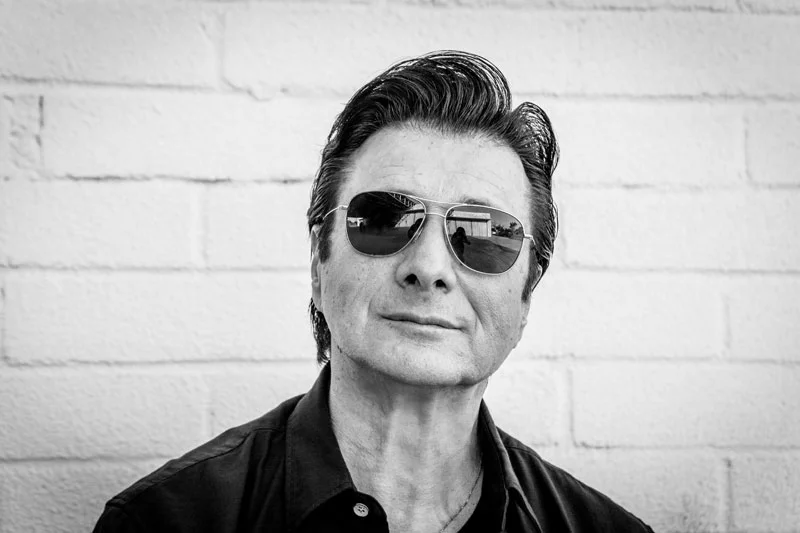
Steve Perry, widely recognized as the quintessential Journey lead singer, propelled the band to unprecedented heights during their most commercially successful era. Born with a gift for singing, Perry’s powerful and emotive vocals struck a chord with audiences worldwide. With Perry at the helm, Journey released a string of chart-topping albums, including “Infinity,” “Escape,” and “Frontiers.” Iconic songs like “Don’t Stop Believin’,” “Open Arms,” and “Faithfully” became anthems for a generation. Perry’s remarkable songwriting abilities and magnetic stage presence contributed to the band’s enduring legacy.
Current Lead Singer: Arnel Pineda

Following Steve Perry’s departure in 1987, Journey experienced a series of lead singer changes. Steve Augeri, known for his vocal range and stage charisma, took over from 1998 to 2006. Jeff Scott Soto briefly joined the band in 2006, leaving his mark with his distinctive style. However, it was Arnel Pineda who breathed new life into Journey as the current lead singer. Pineda’s incredible vocal resemblance to Steve Perry, coupled with his dynamic stage presence, won the hearts of fans worldwide. Since 2008, Pineda has seamlessly integrated into the band, injecting fresh energy and passion into their performances.
Journey’s Enduring Discography: Albums That Defined an Era
Over the past five decades, Journey has released a diverse and extensive discography, showcasing their musical prowess and creativity. Let’s explore some of their most iconic albums:
“ Infinity ” (1978): With Steve Perry as the lead singer, “Infinity” marked a significant turning point for Journey. It featured hit singles like “Wheel in the Sky” and “Lights,” solidifying their place in the rock music landscape.
“ Escape ” (1981): This album became a monumental success, boasting chart-topping hits such as “Don’t Stop Believin'” and “Open Arms.” “Escape” catapulted Journey to international stardom and remains one of their most beloved records.
“ Frontiers ” (1983): Building upon their previous success, “Frontiers” showcased Journey’s evolution with tracks like “Separate Ways (Worlds Apart)” and “Faithfully.” The album’s polished production and memorable hooks solidified Journey’s status as one of the biggest rock bands of the 1980s.
“ Raised on Radio ” (1986): Released during the band’s final years with Steve Perry, “Raised on Radio” featured a more radio-friendly sound and produced hits like “Be Good to Yourself” and “I’ll Be Alright Without You.” Despite tensions within the band, the album showcased their ability to create catchy, melodic rock tunes.
“ Revelation ” (2008): With Arnel Pineda as the lead singer, “Revelation” marked a new chapter for Journey. The album featured new recordings of their classic hits, reaffirming Pineda’s vocal prowess and rekindling the band’s popularity among longtime fans and a new generation.
“ Eclipse ” (2011): Continuing their musical journey with Pineda, Journey released “Eclipse,” a record that showcased their ability to evolve while staying true to their roots. The album demonstrated their enduring songwriting skills and featured tracks like “City of Hope” and “Edge of the Moment.”
“Escape & Frontiers Live in Japan” (2019): As a testament to their enduring appeal, Journey released a live album featuring their performances of the “Escape” and “Frontiers” albums in their entirety. The release showcased the band’s timeless hits in a live setting, capturing the energy and excitement of their concerts.
Journey’s Impact and Legacy
Journey’s impact on the rock music landscape cannot be overstated. With their infectious melodies, anthemic choruses, and powerful vocals, they carved out a unique sound that resonated with millions of listeners. Their music transcended generations, becoming the soundtrack to countless moments and capturing the hearts of fans worldwide.
Steve Perry’s tenure as the lead singer marked the band’s most successful period, and his distinct voice became synonymous with Journey’s sound. His emotional delivery and ability to connect with audiences elevated their songs to new heights and created an unparalleled legacy.
Arnel Pineda’s addition to the band injected new energy into Journey and allowed them to continue their musical journey. Pineda’s remarkable vocal resemblance to Perry breathed new life into the band’s live performances, earning him a dedicated fanbase and ensuring that Journey’s music lives on.
Journey’s timeless hits continue to be celebrated and embraced today. Songs like “Don’t Stop Believin'” have become cultural touchstones, appearing in films, TV shows, and sporting events, and capturing the imaginations of new generations of listeners.
Journey Band Member’s Ages
Here, is the list of all the Journey member’s ages. It seems like all of the Journey band members are above 50 and below 80.
Recommended Posts
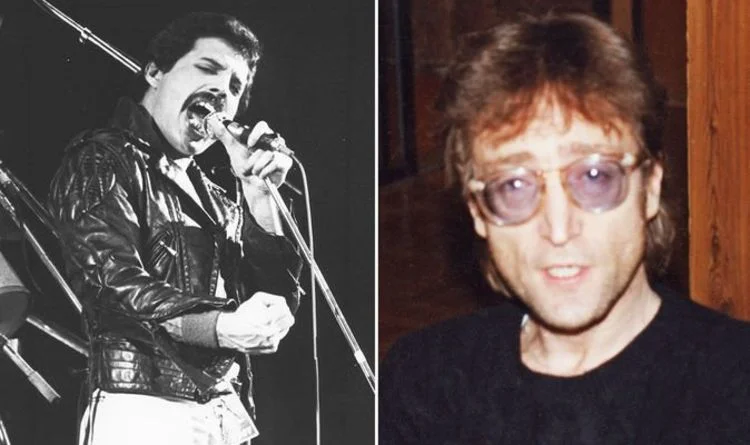
John Lennon’s opinion on Queen
John Lennon was the oldest founding member of The Beatles and was born in Liverpool, England, much like all the other members of the band. He was only 29 years old when the band broke up in 1970, and the music industry had seen rapid turmoil during that decade with the emergence of numerous new […]
Rush’s Geddy Lee gives his opinion on Led Zeppelin
In an interview with Classic Rock magazine, Geddy Lee, the bassist, singer, and occasionally pianist for Rush, shared his thoughts on Led Zeppelin. The Canadian guitarist discussed the band’s sound and offered commentary on their iconic album “Led Zeppelin IV.” Rush’s Geddy Lee gives his opinion on Led Zeppelin: Geddy said, “I had the pleasure […]
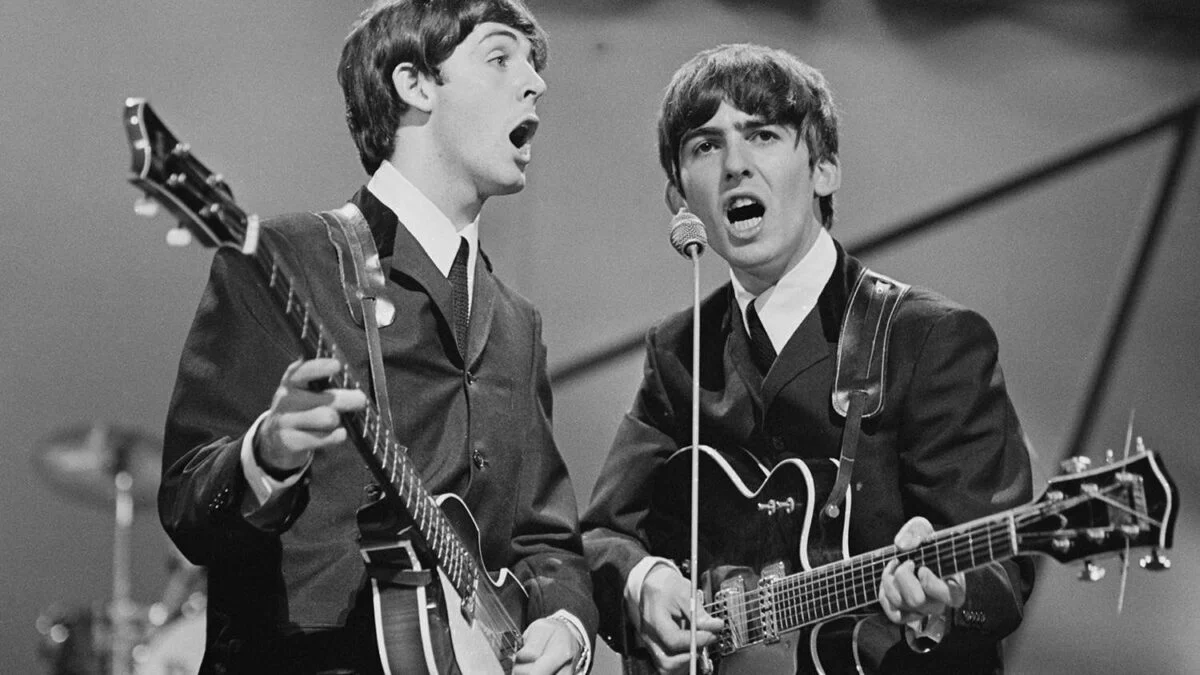
George Harrison’s opinion on Paul McCartney’s solo career
With just 13 studio albums, The Beatles were the most successful and influential band of all time. They sold an estimated 600 million records worldwide, making them the best-selling band in history, and they impacted several generations of musicians. However, John Lennon’s decision to quit the band in 1970 brought an end to the group’s […]
Leave A Comment Cancel reply
Save my name, email, and website in this browser for the next time I comment.
Post Comment

Bios, band histories for the greatest in rock.
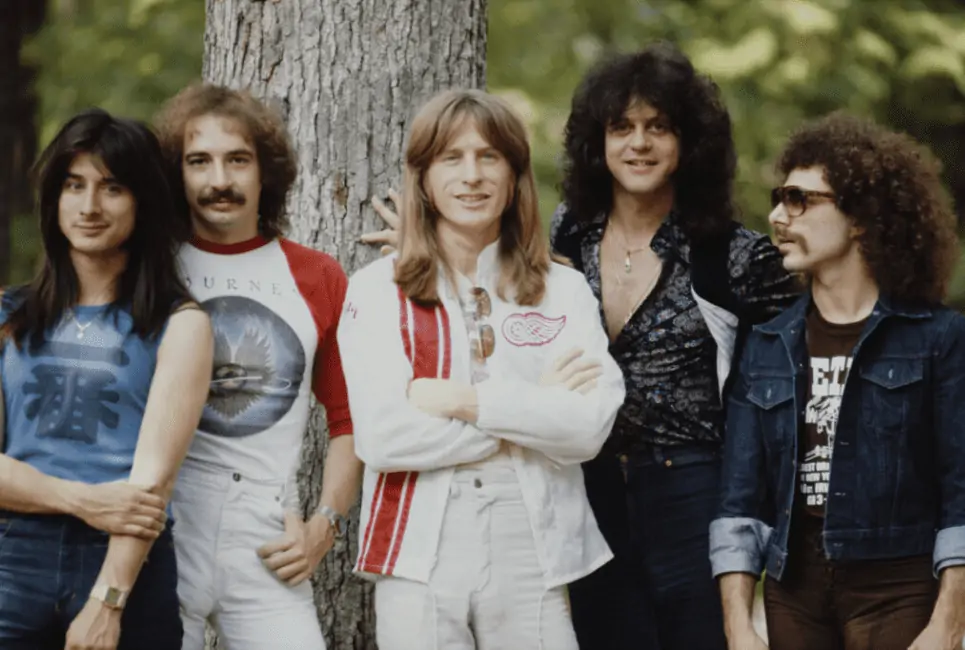
Journey Band History
- Latest Posts
- 10 Best 80s Rock Trios – When Rock Became ‘Modern’ - March 26, 2024
- 10 Best 90s Rock Trios – The Last Great Rock Trios - January 25, 2024
- Best Blues Power Trios of All Time - January 12, 2024
Journey Quick Facts Up Front
Gregg rolie, steve perry, jonathan cain, steve smith, ross valory, journey (1975); look into the future(1976); next (1977), infinity (1970), evolution (1979); departure (1980), dream, after dream (1980), escape (1981), raised in radio (1986), trail by fire (1996), arrivals (2000), revelation (2008), freedom (2022).
- Early Days Journey in their Fusion Days: Journey - Full Concert - 03/30/74 - Winterland (OFFICIAL)
- Arguably the Best Group Lineup Performing During the Escape Tour: Journey - Don’t Stop Believin’ (from Live in Houston 1981: The Escape Tour)
- A Recent Performance with Schon at the Helm. Pineda’s Vocal Performance is Stunning: Journey Live @ Lollapalooza Chicago 2021
The Journey Lawsuit & Replacements
Did journey sell out.
The glorious days of arena rock would not be as memorable without Journey. There could not be a better name for a band that went through many changes, successes, and failures and almost single-handedly rose the power ballad to the charts.
Journey’s band history is the epitome of 80s rock and the clashes between some of the most extraordinary rock musicians of the time.
Like all Journey fans, the first songs I heard were Steve Perry’s lead emotional ballads. He was the perfect singer for the ideal backing band. Yet, listening years later as a musician, I understood that it was not Steve Perry’s or Neal Schon’s Journey; the group’s creative chemistry made it all happen. Apart from the most commercially relevant period, Journey was and still stands strong. This bio might introduce you to some aspects and periods of the band that are now almost forgotten.
Journey Members You Should Know
The lineup changes are crucial to Journey’s band history. Nowadays, with only Neil Schon left as a founding member, we need to go back to the early days to understand who wrote and played the songs that made them famous.
All lineups were made up of the top rock musicians of each era. Not all, though, contribute as much as others.

Neil George Joseph Schon (born February 27, 1954, in Oklahoma) is the band’s guitar player, founding member, and occasional songwriter.
Born in a musical family, Schon soon became a child prodigy after starting playing guitar at ten and being recruited by Santana at age 17. By the time he started Journey, he had experience playing in one of the best bands in the world and was fluent in jazz, rock, and Latin music.
Neal Schon is one of the most melodic guitar players of all time. He essentially shifted my perspective of a rock solo to a musical piece that tells a story rather than a power shred, which he occasionally tastefully adds.
Schon was always the leader behind the scenes, taking a significant say in all the band’s important decisions and even personally firing and replacing members. As a solo artist, he released nine albums and founded the bands “Hardline” and “Bad English.”

Gregg Alan Rolie (born June 17, !947, in Washington) is a founding member and journey original keyboard player and vocalist. As a Santana band member, Rolie was already a senior musician by the time Schon joined. He arguably shared with Santana the same success as with Journey, singing and playing in some of their biggest hits.
He formed Journey in 1973 and co-wrote the band’s first six albums before being replaced by the pressure of Steve Perry’s musical choices.
Rolie was as essential as Schon in creating the “Journey Sound” with signature Hammond, piano sound, and a bed of synths that backed the band’s rock groove.
Rolie is one of the most prolific musicians ever, with a successful solo career after his time with the band. He founded with Journey’s ex-member “The Storm.” He was part of Ringo Star’s “All Starr Band.”
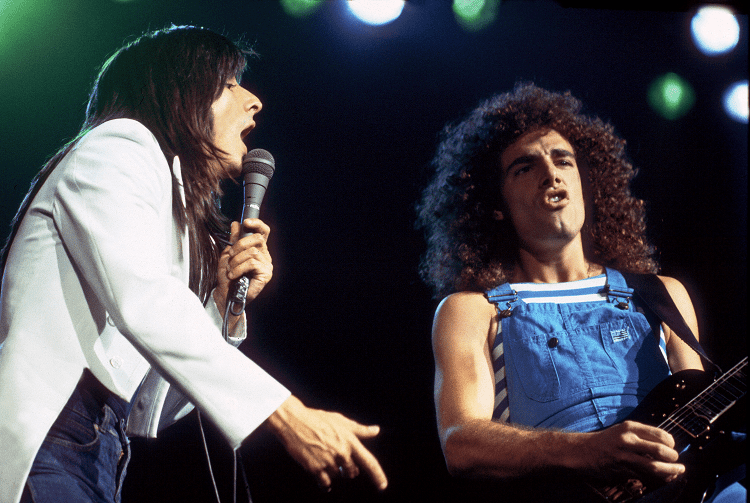
Steve Ray Perry (born January 22, 1949, in Hanford, California) was Journey’s lead singer, frontman, and main songwriter in their most successful years.
Perry’s exceptional vocal range and affinity for writing ballads and pop songs gave Journey what they needed to become the biggest arena rock band in the world. His musical beginning, though, was unsuccessful, with many failed attempts, sometimes even from misfortunes.
Manager Herbert picked up one of Perry’s demos while he had returned to working on his family’s farm and called him to perform with the band while Rober Fleischman was already hired as a singer. One song performed during soundcheck with the band sealed his place as frontman.
Perry undoubtedly came at the right time in the right band to change it all for Journey. The mental cost of fame and several misfortunes, the last a degenerative bone disease, forced him out of the band.
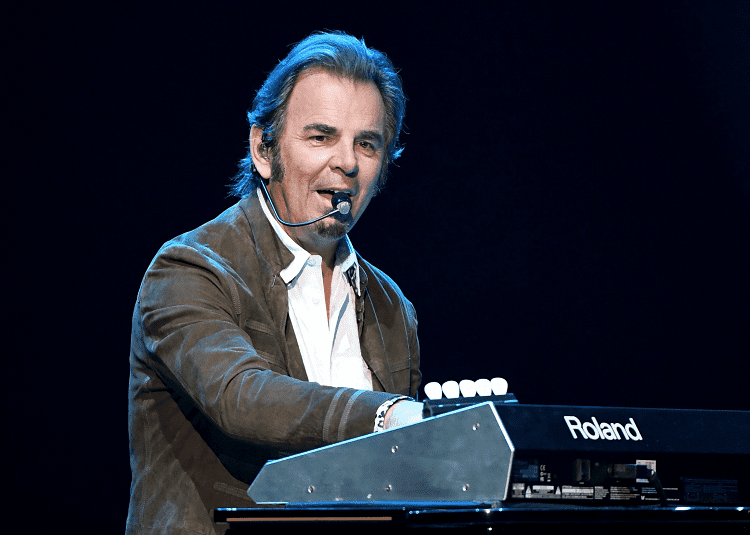
Jonathan Leonard Friga (born February 2, 1950, in Chicago, Illinois) was Journey’s most prolific keyboard player, coming in to replace Rolie and helping write the band’s most successful material.
Cain is a multi-instrumentalist who made a name for himself with the band “The Babys.” which opened for Journey. His ability to write with Perry was what convinced the singer to replace the already prolific Rolie.
Cain turned the already well-tuned Journey rhythm section into a hit-power ballad maker. Unlike Rolie, Cain’s signature is more straightforward melodic piano intros that laid the bed for tunes such as “In My Arms” or “Don’t Stop Believing.”
He was part of “Bad English” and recently started publishing Christian Rock records while serving as a Worship leader with his wife.
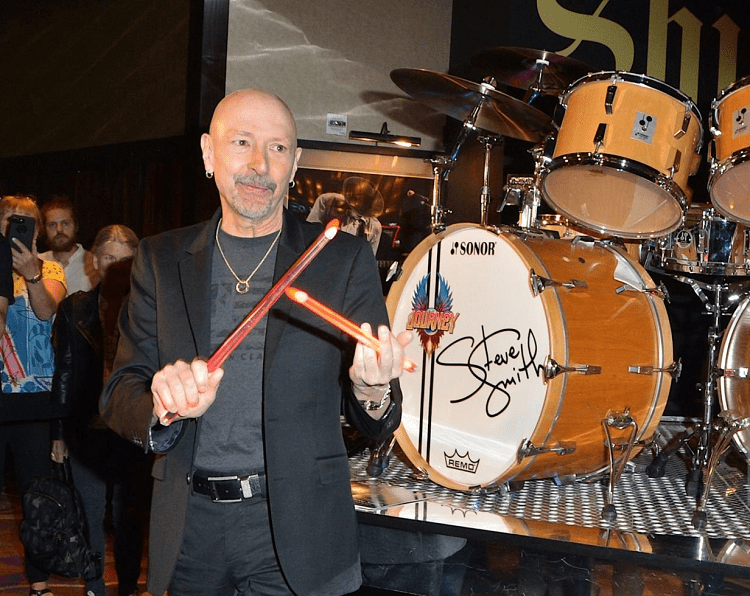
Steve Bruce Smith (born August 21, 1954, in Whitman, Massachusetts) was Journey’s drummer through their most prolific years and is widely considered one of the best musicians to ever sit behind a kit.
Smith is one of the most recorded drummers in history, having played sessions for virtually every top charting artist. He was voted five times in a row No.1 All-around Drummer from Modern Drummer magazine and inducted into the Modern Drummer Hall of Fame.
The session legend was part of three different Journey Lineups, part of Journey member’s spin-off group “The Storm,” and led his jazz-fusion groups.

Ross Lamont Valory (born February 2, 1949, in San Francisco) is a founding member of Journey and the bass player in two different lineups.
Like the other founding members, Valory played with a legendary group before forming Journey. He was part of Frumious Bandersnatch and later Steve Miller Band. He holds a special place in Journey’s history, playing in all but one studio record. Even when he was not part of the band, he was hired to write and record bass tracks.
Valory is a master bass player who uses his variation of a “Nashville Tuning,” Where the 4-string bass is tuned to B-E-A-D. He continued his career in the 90s with “The Storm,” like most original Journey members.
Journey started as the most accidental Supergroup ever in a time when the notion was still new. Ex-member of Santana and Steve Miller members got together to form their prog rock, jazz fusion band called “The Golden Gate Rhythm Section.”
The mastermind behind much of Journey’s career was their manager Herbier Herbert who previously managed Santana.
The band would perform as a backing band for Bay Area artists, with Schon and George Tickner on guitar, Rolie on Keyboards and vocals, Valory on bass, and Prairie Prince on drums. The latter would be replaced by Aynsley Dunbar around the same time Tickner quit.
The early “Journey” never achieved commercial success, mostly due to their previous musically complex influences and the lack of a strong frontman. Roli was an excellent keyboard player and vocalist, but his old-style appeal was not what the band needed to relate to young audiences.
As a band, Journey has evolved and changed more than most. It sounds like a different band from the 1st to their 14th studio album. I’ll detail most of their stunning discography according to their impact on the band and rock music.
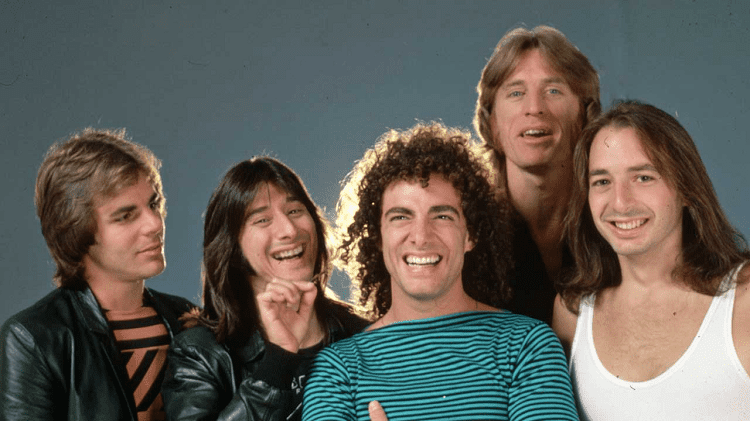
The first 3 Journey albums are a musical treat for every sophisticated rock lover. The complex compositions, delicate songwriting, and individual chops of members are three key elements that made them. There are no weak songs in any of them, yet there are not many memorable ones.
The Debut album is the ex-Santana and Steve Miller Band members having fun. The prog style might be their favorite thing to do, but as prog rock was slowly going off the charts, rock audiences needed something else.
From the first to the third album, the experimentation leaves off more place for catchy tracks. With Roli at the creative front and Herbert at the back, the band seemed to tone down their fusion influences to achieve success finally.
Commercially none of the albums did exceptionally well, and most of the band’s time was spent touring and trying to promote them.
As a guitar player and prog rock freak, I love early Journey sometimes more than the Steve Perry one. I find Neal Schon’s best guitar performances when some glimpses of jazz fusion are put in the mix.
Not to say that his later solos were less iconic, but later I found he would mainly “serve the songs” while the guitars made the song on the early Records. The same can be said about every lead instrument.
Depending on your background and taste, you could either love this version of Journey or, like many new fans, skip the three albums entirely. If you belong to the second group, I will encourage you to listen to the first song from the Debut Album, “Of a lifetime, “and you might change your mind.
The Much Needed Lead Singer
The musical chemistry, management, and inspiration were there for Journey, but their image and performances lacked the strong crowd-pleasing frontman. Behind the Keyboards, singing lead vocals, Roli did his part musically, but not stylistically.
The band’s first singer, hired with Herber’s suggestion, was glam rocker Robert Fleischman. With a high register and great stage presence, Fleischman toured successfully with Journey in 1977 until Steve Perry replaced him after he sang one in soundcheck with the band on the same tour.
Perry not only performed flawlessly exciting songs but managed to bond immediately with Neil Schon in writing their first songs together. The band changed direction and with that also their drummer. Session ace Smith replaced Dunbar, who was unhappy with the new pop direction of the band.

The first album with Perry as lead vocalist launched the band to commercial success reaching No. 21 on Billboard. “Infinity” marks the band’s change in musical direction, with Queen’s producer Roy Thomas Baker directing the shift.
The album is strong in every aspect. The songwriting, production, intent, and musicianship are top-notch. It combines the band’s collected materials and Perry’s melancholic songwriting over the years. His voice added character to the virtuoso band that needed it. My favorite song from the album is “Wheel in the Sky,” written by Fleischman and the band before Perry joined in. Perry’s voice, though, I think, does it more justice.
It starts with Neil Schon’s classically influenced guitar part and develops to a hard rock tone with a country riff. The mixture of different genres is, I think, what makes all individuals of the band shine.
The two songs that better defined the band’s musical direction were the power ballads “Lights” and “Patiently.” Slow-tempo emotional tracks with a solid vocal melody that builds up to guitar solos and live encores. Both tracks are now legendary and staples of the band’s live shows.
The following two Journey studio albums saw the band’s rise to fame, each doing better than the previous. They were headlining tours and festivals and having crowds resonate massively with their songs for the first time.
Both albums continued where “Infinity” left off, merging Perry’s now-proven hit songwriting skills with the band’s musicianship. The new frontman was now contributing to all the songs and indirectly dictating the band’s sound. Not all songs are great, though; most lack memorable hooks and fade compared to the hits.
My favorite of the two albums is “Departure.” There’s a spice more of prog rock in that album which I think brings out the best of the band. After all, the band was not originally an Arena rock act.
“Any way you want” and “Loving’, Touchin’, Squeezin;” are widely known tracks. My favorites are the less popular “Do You Recall” and “I’m Cryin,” which Perry and Rolie co-wrote.
The next record was a musical spin-off as a soundtrack album. Beyond all expectations, the band produced the most musically intricate prog rock album of their career.
It’s arguably the most polarising album of Journey’s catalog, yet one the band truly enjoyed making. The all-star band of virtuoso musicians couldn’t wait to stretch the musical muscles once again as in the old days. The result is fantastic prog rock, yet not one you would most likely hear on the radio.
I adore the compositions and musicianship on all the songs, especially the 8-minute opening track “Destiny.” In true prog fashion, extended instrumentation and solos weren’t missing.
It’s not an album for everyone, but those who like it, love it.

Rolie leaving the band in favor of Jonathan Cain might have consisted of one of the best musicians on earth, but it gave them the best-selling album of their career . The album almost single-handedly created the 80s sound.
The album starts with the band’s epic rock anthem, “Don’t Stop Believin’.” The song was started by Perry and Schon and later finished by Cain, who added the piano hook and hook. As Cain relieves in an interview, those were the three words his dad told him when he wanted to quit music.
The song is today the best-selling catalog track of the digital era. It’s now beyond a rock anthem to a pop culture hit. Journey’s “Free Bird” in a sense.
Cain brought in the catchy hooks and memorable piano parts and perfectly completed Perry’s ideas. The ballad “Open Arms” they wrote together differed from previous ones. It was more delicate, straightforward, catchy, and singable. After some struggles in getting it through Schoun skeptical reception of the song, it became a fan favorite.
Journey – Open Arms (Official Video – 1982)
The song that moves me the most is “Mother, Father.” Perry recorded the vocals in one mesmerizing take. What’s more impressive is that it is probably the hardest Journey song to sing.
“Espace” paved the way for the next charting album in 1983, “Frontiers.” It produced hit songs and anthems and delivered on the success of the previous albums.
Success and Downfall
Journey waited three years to release an album for the first time in their career. The continuous touring and fame were starting to kick back. Schon and Perry had also released their solo records capitalizing on Journey’s Success.
Perry, at this time, dominated the band’s musical direction completely. According to him, only Schon and Cain were suited for the band as he fired Roos Valory and, slightly later, Steve Smith. As he declared in an interview, he thought it was the best decision at the time, but he regrets doing it.
His mental health was also deteriorating as the rise to fame alienated him from the rest of the world.
Replacing both members with session musicians gave the trio more control over the songs. Perry himself took up the role of producer for the album. “Raised In Radio” is a successful attempt to top the charts through their hit song formula, but the lack of team effort is felt.
I think the album is too poppy and sacrifices the musical input of Valory and Smith for attempted hooks. There are undoubtedly hit songs such as “Girl, I Can’t Help It” and “Be Good To Yourself,” yet it’s not an album I can enjoy listening to back to back like the rest.
Commercially it did well, as expected. The band knew how to write hit songs and what the audience wanted by this time. Listening to it now, It feels like Perry’s rushed attempt to stay on top of the game and even outdo himself.
Disbandment and Attempted Comeback
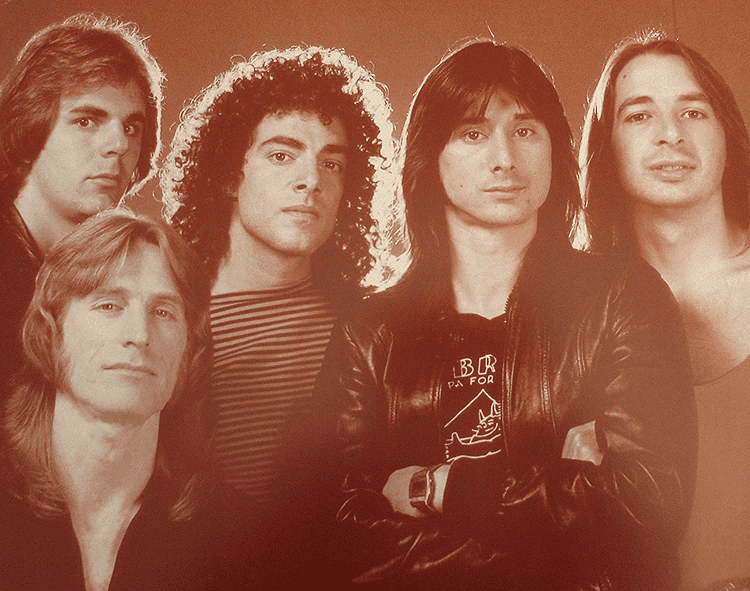
The problems with Perry’s control over the band and continuous isolated life lead to him wanting to stop everything. After his last show with the band in February 1987, he left the band and stopped Journey for almost ten years.
Perry never released an official statement, and some still wonder if the animosity between members was the main cause of his leaving. The fact that he released music after leaving the band makes me think he still wanted to make music on his own, in less frantic terms.
One thing is for sure; Journey couldn’t keep up their successful streak without Perry, so each went separate ways.
In 1995 the band reunited again at Perry’s request to fire current manager Herbert for the well-known Irving Azoff, which staged the Eagles’ comeback some years prior.
Journey was back, and a long-awaited successful album came shortly after. All members had amassed material during the years, so a musically rich album was bound to come.
“Trial by Fire” is my favorite Journey album after “Escape,” as it delivers the quality you’d expect from a great comeback. The hit song “When You Love a Woman” was surely meant to be a hit, but it’s not formulaic in any way.
Valory and Smith back on the band brought back the original backbone of the group. Putting this album back to back with its predecessor, you will notice the difference the rhythm section had in Journey after a few tracks. It gives character to songs having individual doing their thing and not hired guns.
I wish it had some more elements of hard rock, but that might be just the nostalgia from the days of “Don’t Stop Believin’.”
This album is the last Perry contribution as he was diagnosed unexpectedly with a bone condition and was unwilling to undergo surgery to continue touring.
Modern Journey

Journey is still touring and releasing albums today, with only Schon remaining an original band member. He calls the shots about the music direction and often replaces members.
After Perry distanced himself from music, the band moved on and recruited Steve Augeri as frontman, with drummer Deen Castronovo as occasional lead vocalist. Augeri was the perfect vocalist for Journey, who needed the same high-pitched power Steve Perry had.
Of the two albums Journey released with Perry, the first one is the only one that somehow matched the previous albums’ quality. It’s not the band’s most creative work, yet it’s an album with the pure Journey sound almost intact.
The album is instrumentally great but lacks strong songwriting. Augeri contributed to some songs, yet his role as the newcomer was to sing, according to Schon and Cain’s writing.
The song “World Gone Wild” is my favorite of the whole album, showing off Augeri skills at best and some great guitar work by Schon.
Commercially it did well, considering that arena rock was not the most popular genre of the early 2000s. I think that part of the merit goes to the fans’ curiosity and joy of having another Journey album.
The next album with Augeri, “Generations,” was the band’s least successful record after having him fired.
Ariel Pineda replaced Augeri in a dream story of Schon recruiting him after watching his Journey Covers on YouTube. The album was the band’s last big commercial success, even though the era of rock bands topping the charts was gone.
In true Journey style, Cain delivers a hit power ballad. “After All These Years” is just as good as any of the band’s legendary ballads and is only penalized by the rise of pop and dance music. I love how the band switched to a hard rock style for this record, flexing some fast-paced tempo grooves after a while.
Pineda seemed to be a bigger creative force than Augeri and an equally experienced live frontman. The live shows with the classic hits were and still are the band’s main focus, accumulating ridiculous amounts from the tour.
Having survived a pandemic, lawsuit, and personnel changes, Journey released their new record in more than a decade. Years of accumulated creativity resulted in an arena rock juggernaut.
Cain and Schon were in charge of the production, while drummer Narada, a prolific songwriter and singer, helped write and co-produce much of the material. It starts with the power ballad “Together We Run” and the expected melodic Cain piano intro.
Listening to album after ten other Journey pop-rock records can be too much if you’re not a die-hard fan. I would have preferred a more Prog rock Journey record as that always brings new sounds.
Notable Performances
Early days journey in their fusion days: journey – full concert – 03/30/74 – winterland (official) .
Arguably the Best Group Lineup Performing During the Escape Tour: Journey – Don’t Stop Believin’ (from Live in Houston 1981: The Escape Tour)
A Recent Performance with Schon at the Helm. Pineda’s Vocal Performance is Stunning: Journey Live @ Lollapalooza Chicago 2021
Changes in band members always come with legal issues when rights to songs are on the table. In the 80s, they maintained a good balance between members. Primarily due to solid management from Herbert, things were kept quiet.
Valory and Smith were fired from the band in 2019 after attempting to own one of the band’s corporate entities. According to the two, Perry gave them the right to hold that part of the business. Schon and Cain considered this an attempt to squeeze more money even when they were not playing.
Journey did write beautiful songs, yet the term’ corporate rock’ started to haunt them as each charting album chased the next big thing. The bad reputation arena rock gets from rock fans sometimes comes from the many attempts to write hits and please the crowd.
My stand as a rock fan with a taste from Beatles to modern metal is that Journey didn’t sell out in the sense of chasing money. Their style evolved, sometimes in search of a bigger fanbase, but still, they delivered nongeneric hits.
They developed a successful style that pushed them to recreate the success repeatedly. The members’ egos, management pressures, and fans’ high expectations had their parts.
Answer : One roadie, John Villanueva, suggested the name after failed attempts, including a radio contest involving the fans to find a proper name.
Answer : Journey had six lead singers in the band from the 70s to today.
Answer : Arena rock is considered any rock genre that can fill a stadium on a one-night event. In the mid-70s and 80s, it took a slightly different meaning, becoming a synonym for successful commercial rock bands who were best known for Power Ballads. Arena rock bands deliver great spectacles with massive crowds and often have predictable, straightforward music to resonate with as many people as possible.
- Journey (band) – Wikipedia
- Journey Documentary (Behind The Music)
- Don’t Stop Believin’: Everyman’s Journey HD
- Journey – Raised On Radio (1986 Tour Documentary)
- Journey Music
- Journey (band)
- Journey’s Neal Schon says he and Steve Perry are ‘in a good place’ before band’s 50th anniversary
- Journey Biography, Songs, & Albums | AllMusic
- Journey – The Brilliant Band Members, Stories & Struggles | Eagle 106.5
- Journey: Band Members and History
Looking for more interesting readings? Check out:
- The Police Band History
- AC/DC Band History
- R.E.M. Band History
Related Posts

The Beatles Band History
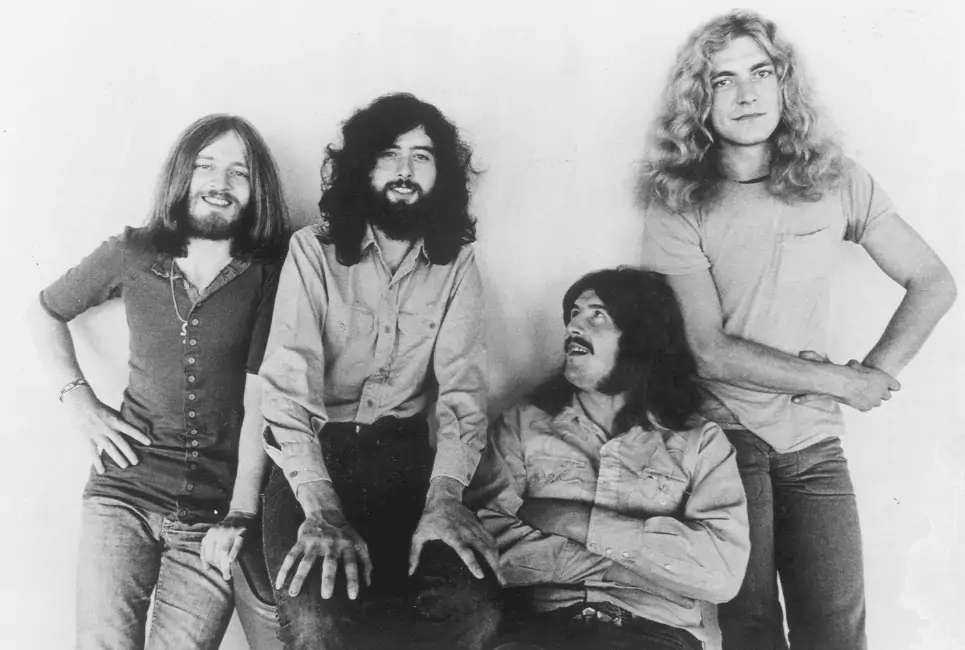
Led Zeppelin Band History
Leave a comment.
Your email address will not be published. Required fields are marked *

Artists - A-H
- & Young
- .38 Special
- Aaron Lewis
- Aaron Neville
Artists - I-P
- Iron Butterfly
- Iron Maiden
- Izzy Stradlin
Artists - Q-Z
- Queens of the Stone Age
- Queensrÿche
- Classic Rock

- Keyboardist Jim Beard, Known for His...
- 12 Rock Legends Who Openly Dislike...
- 10 Rock Stars Who Can’t Stand...

- Legendary Motorhead Frontman, Lemmy, To Be...
- Happy 76th Birthday Tony Iommi: How...
- Metallica Secures Best Metal Performance at...

- Unveiling Stevie Ray Vaughan’s Top 10...
- Album Review: “Two Steps From The...
- The Facts In The Early Life...
The History Of Journey’s Music

via journey/YouTube
A Long Way To The Top
Unlike other bands from the 1970s, Journey had a pretty weak start in the music industry and it took them years before they broke into mainstream and got the recognition they deserved.
They formed in 1973 and released their first album in 1975 which established their sound that fused jazz and progressive rock. It didn’t work well for them though – at least not commercially.
Guitarist Neal Schon recalls, “I still think some of the stuff we did then was great. Some of it was self-indulgent, just jamming for ourselves, but I also think a lot of other things hurt us in the early days. It took a while for the politics to sort of shape up.”
They opened for popular rock acts like Black Sabbath, Target, Judas Priest and Emerson, Lake & Palmer but fame still eluded Journey.
When they got singer Steve Perry onboard, it was clear from the get-go that he suited the band perfectly. They changed their musical approach – deciding to move towards a more commercialized sound mixing guitar-driven hard rock with pop. An early progenitor of “arena rock”, they reached their peak between 1978 and the early ’80s.
With Perry’s smooth tenor and amazing range, their songs have stood the test of time. Their first LP with him, “Infinity” was an immediate success, peaking at #21 on the US Billboard 200. It spawned the popular singles “Lights” and “Wheel in the Sky” which became a staple in their live shows.
Their fifth studio effort “Evolution” gave them their first top 20 hit in the US Billboard Hot 100 -“Lovin’, Touchin’, Squeezin'” which was partly inspired by one of Perry’s musical influences Sam Cooke. Schon’s heavy guitar work and Perry’s soulful vocals were a match made in music heaven.
They struck gold in 1981 with the release of “Escape” – the first to feature keyboardist Jonathan Cain. The LP gave them four classic hits “Don’t Stop Believin'”, “Who’s Crying Now”, “Still They Ride”, and “Open Arms”.
By this time, they have refined and perfect their sound – infectious melody, heavy riffing, face-melting guitar solos, and Perry’s soaring vocals. It wasn’t all hard rock numbers because even their ballads were something else thanks mostly to Perry’s impeccable and effective delivery.
Riding high on the success of “Escape”, they released “Frontiers” less than two years later which included four more successful singles – “After the Fall”, “Send Her My Love”, “Faithfully”, and “Separate Ways (Worlds Apart)”.
Unfortunately, it was all downhill from there. They had a couple more albums but nothing that touched the greatness of “Escape” and “Frontiers”. That’s not to say their songs are bad, they still had their moments but at the height of their career, they were simply unmatched.
Don’t Miss Out! Sign up for the Latest Updates
I love classic rock.
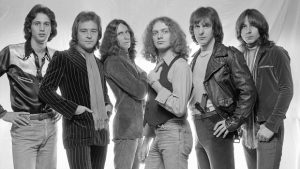
Lou Gramm Thinks Foreigner Made A Mistake In Choosing Hall…

John Oates Release New Solo Song “Long Monday”

9 ’90s Tech Gadgets That Changed Everything

8 ’90s Celebrity Scandals That Made Headlines
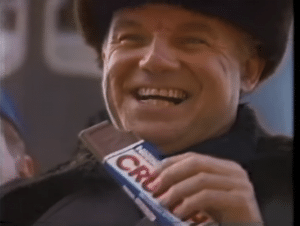
9 ’90s Commercials You Can’t Forget

10 Deaf Musicians That Defied The Odds

Michael Anthony Reveals He Hasn’t Talked To David Lee…
Premium partners.

Interested in becoming a partner?
Contact us for more info.

© 2024 Society Of Rock
- Terms of Use
- Privacy Policy
- Translation missing: en.general.social.links.spotify
- Translation missing: en.general.social.links.apple
- Translation missing: en.general.social.links.amazon
Item added to your cart

Lead Guitar, Songwriting
Three time Hall of Fame and Grammy Award Winning artist Neal Schon is one of the most accomplished and recognized guitarists and songwriters worldwide. Admired as a trailblazer and inspiration to millions, the Journey founder has long established his position as one of the greatest guitarists of all time, with some of the top all time best selling singles and albums, including multiple Gold and Platinum as well as two Diamond certifications, over 100 million records sold, and over a billion Spotify streams.
Neal Schon founded Journey in 1972 and has been the only consistent member, having participated in every album and tour to date. Schon is a Grammy Award winning guitarist, songwriter, and vocalist who is not only the founding member of Journey, but was a member of Santana at the age of 15 and has performed with a variety of other acts including Bad English , Jan Hammer , HSAS , and has released 11 solo albums, including his latest, Universe .
Neal Schon's guitar style has been described as soulful, melodic, and is infamously admired by such fellow legends as Eric Clapton and Prince .
In 2005, Neal Schon and Journey received a Star on the iconic Hollywood Walk of Fame and were further recognized by Billboard Magazine with the Legend Of Live Award at the 2011 Billboard Touring Conference .
Neal Schon was inducted into the Rock & Roll Hall Of Fame as a member of Journey as well as the Oklahoma Music Hall of Fame . Tulsa, Oklahoma Mayor G.T. Bynum honored Neal with the announcement of June 5th to be Neal Schon Day in Oklahoma. The announcement was at the Woody Guthrie Center Museum , and Neal also made an archival contribution to the Oklahoma Museum of Popular Culture (OKPOP) in July.
Schon has also received honors for his philanthropic work including John Hopkins , Rainforest Fund , California Fire Relief , and numerous additional charitable foundations. He has also organized numerous fundraisers for military services and first responders.
In 2019, Neal was voted Guitar Connoisseur Fan Favorite Guitarist in a social media poll over the course of 15 rounds, consistently topping the list among his fellow legends.
In 2021, on the 40th anniversary of its release, Journey’s seventh studio album, Escape, was certified diamond by the RIAA , which denotes the album has sold over 10 million equivalent units. 1981’s Escape spawned the hits "Open Arms", "Who's Crying Now", "Stone In Love", and "Don't Stop Believin'", which has over a billion streams on Spotify alone . The band rounded out the summer with epic performances, headlining at both the iconic Lallapalooza and iHeartRadio Music Festival and Schon invited to perform “The Star Spangled Banner” at the Las Vegas Raiders Vs. Chicago Bears game on October 10, 2021 at the Allegiant Stadium in Las Vegas , NV.
JOURNEY's 1988 released, 15 time Platinum certified Greatest Hits was certified diamond in April of 2008, has logged 1,328 weeks on Billboard's Catalog Albums chart as of October 2021, and is one of the most popular 'best of' packages, at times selling close to 500,000 copies globally per year.
Journey’s worldwide sales have reached over 100 million records, making them one of the world’s best-selling bands of all time, with a wide selection of chart-topping hits like "Don’t Stop Believin'", the most downloaded song of the last century. The band's album sales have resulted in twenty five gold and platinum albums and nineteen Top 40 singles in the US.

Jonathan Cain
Keys, Songwriting
In 1976 Jonathan Cain released his first solo record, Windy City Breakdown. In 1979 he joined the band, The Babys, and in 1980 joined the rock band, Journey, rounding out the songwriting genius behind the defining album, Escape, which was RIAA certified Diamond this year. Cain's signature piano, synth playing and songwriting contributions with Journey, The Babys and Bad English have earned him many Billboard hits, multiple Gold, Platinum and Diamond-selling records, a Star on the Hollywood walk of fame, a GRAMMY nomination and the best-selling catalog rock song in iTunes’ history (“Don't Stop Believin'”).
Journey was named as the fifth best band in rock history in a 2005 USA Today opinion poll, was inducted to the Rock & Roll Hall of Fame in 2017 and continues today, selling out major venues worldwide. Cain’s solo albums that released amidst acclaim in recent years include: What God Wants To Hear (2016), Unsung Noel (2017), The Songs You Leave Behind (2018), More Like Jesus (2019) and Piano Worship (2020). Later this month (Oct. 2021), Cain will release his Oh Lord Lead Us EP featuring the title track single that became his biggest Spotify solo hit to date.

Arnel Pineda
lead vocals
After searching far and wide, watching thousands of singers on YouTube, Neal Schon was about to abandon his hunt for Journey’s next lead singer. Instead, he clicked one last link and something caught his attention. Arnel Pineda was singing with the band The Zoo, and he wasn’t even singing a Journey song. Neal continued his research on Arnel, watching all 40 videos that were posted. This unearthed Neal’s realization that Arnel is a chameleon who can sing on anything.
Neal knew Arnel was the one. He called Jonathan Cain to tell him he found the guy. After learning Arnel was located in the Philippines, Jon chuckled and said, “Jesus, can he even speak English?” Neal responded with, “Who cares! He’s singing in English, and very well.” Neal called management next, and they told him he was crazy, but they did their job and got him to the US from The Philippines in three months.
It took a few days in rehearsal, but by day three everyone clicked, and Arnel sounded amazing. Once the jet lag wore off, Neal, Jon, and Arnel hit the studio in Novato, CA to get on a couple tracks. Neal played back the audio and said, “There’s the guy.” Jon agreed.
- Choosing a selection results in a full page refresh.

All Inductees >
INDUCTED BY
Pat Monahan
Call the style what you will-arena rock, stadium rock, concert rock-Journey dominated in the ‘70s and ‘80s.
Journey performed ballads and scorchers with equal skill and passion led by Neal Schon’s remarkable guitar and the soaring vocals of Steve Perry.
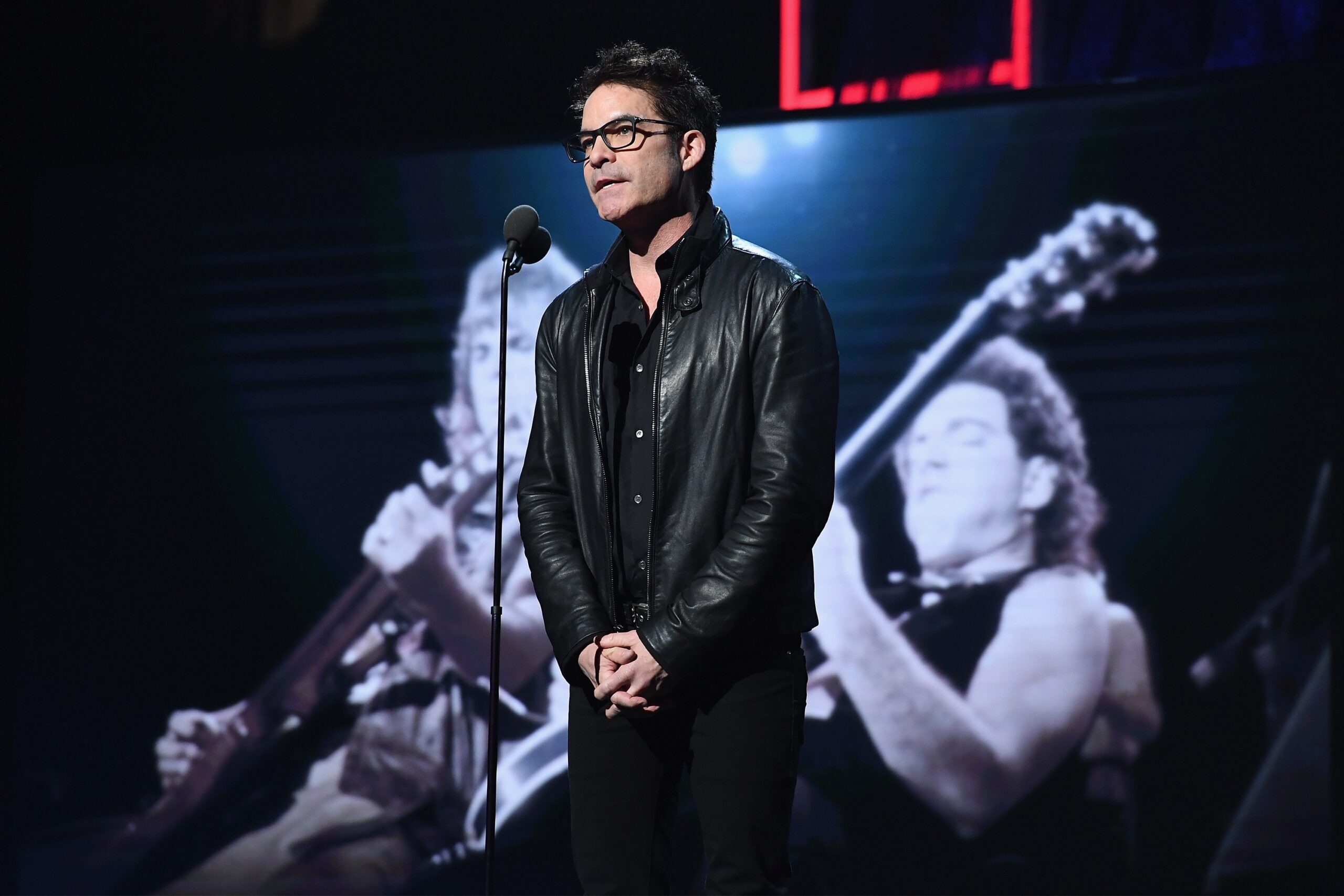
HALL OF FAME ESSAY
By Robert Bourke Warren
In the seventies, and especially the eighties, rock music became an international force, with album sales resulting in packed arenas and stadiums.
Thanks to technology and a shrinking globe, bands suddenly reached untold millions; a hit song, beamed via satellite from culture to culture, could now touch hearts globally. Few groups embraced such unprecedented reach with as much enthusiasm and skill as Bay Area-based Journey.
The Californians not only rode the tsunami wave with panache, they created a template for bands aspiring to this level of engagement with fans. Most impressive, they are still at it, four decades on.
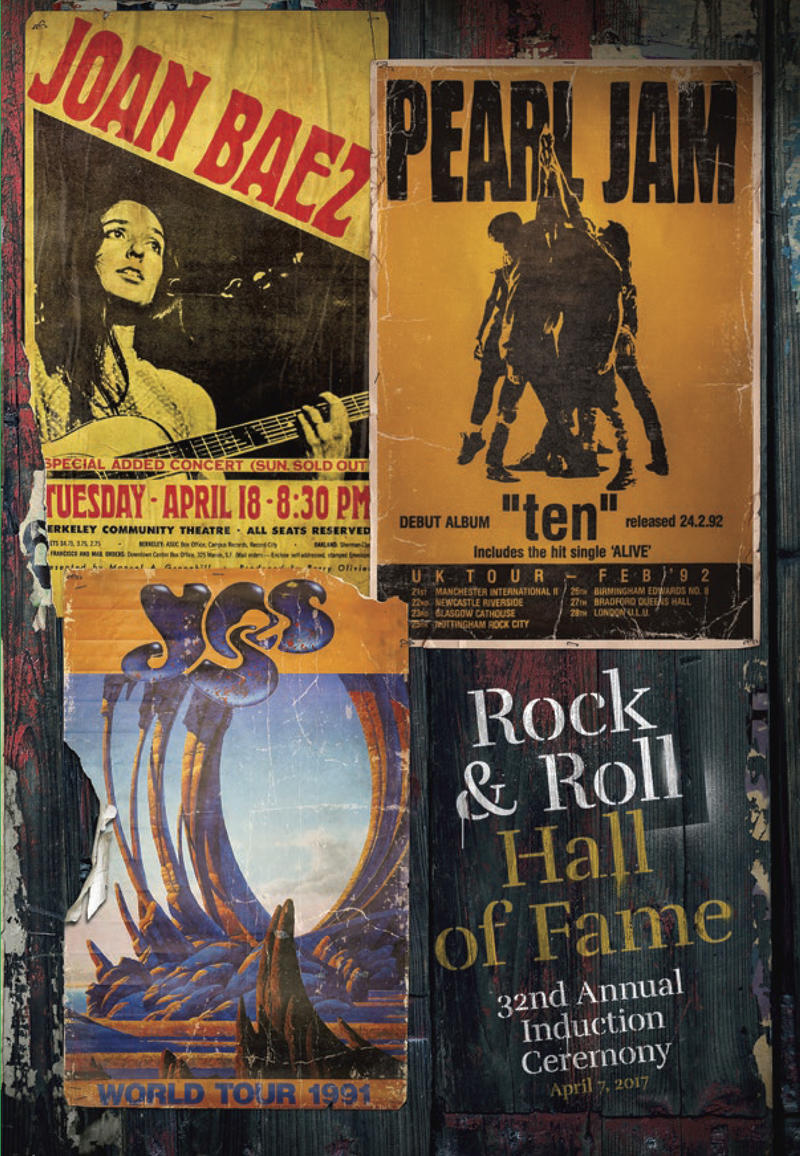
Back to All Inductees

Tupac Shakur
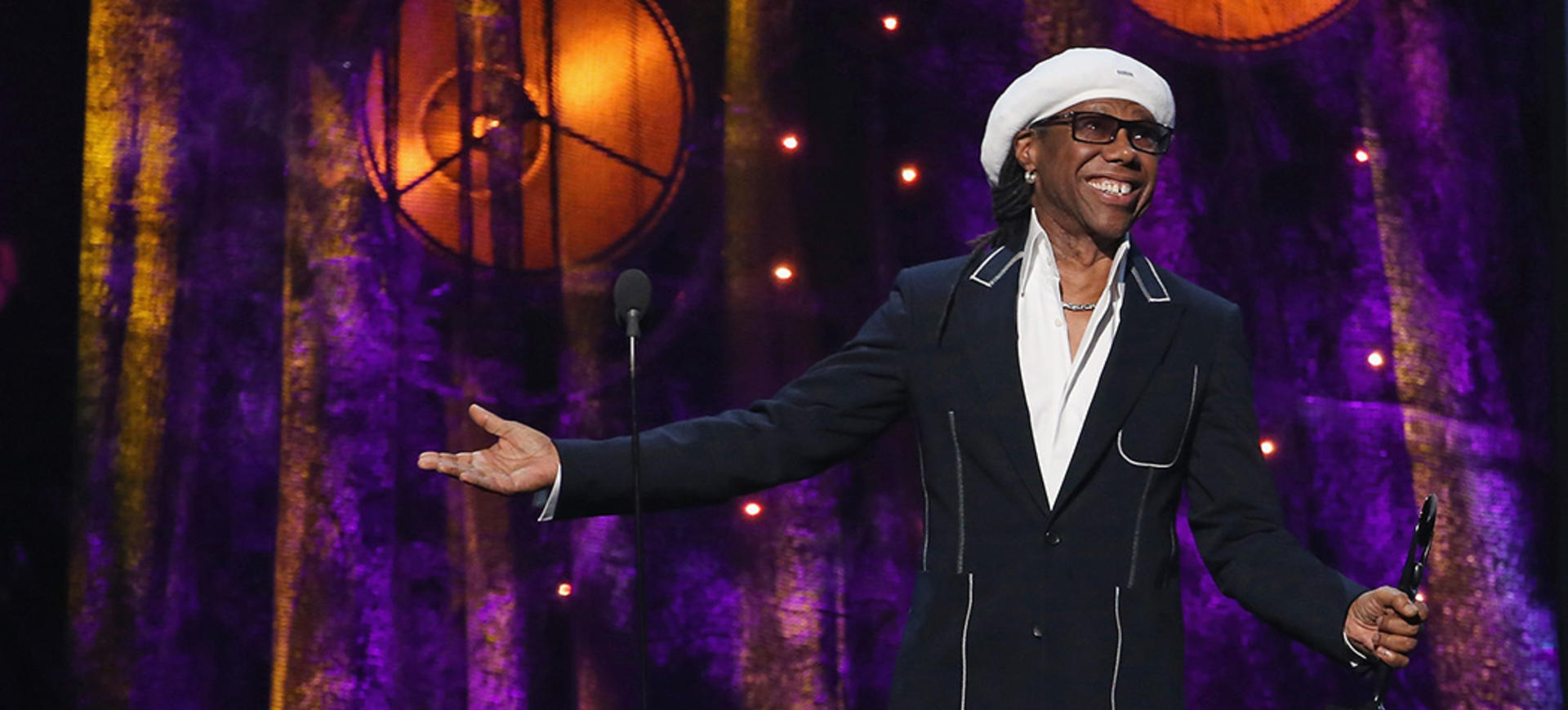
Nile Rodgers

- Manage Account
Chart History
Billboard hot 100™, when you love a woman, i'll be alright without you, who's crying now, lovin', touchin', squeezin', latest videos.
Best Songs to Sing At Karaoke: Taylor Swift, Carly Rae Jepsen & More | Billboard News
Steve perry discusses his return to music & new album ‘traces’ | billboard, latest news, ‘the voice’: gene taylor scores four-chair turn with ‘unbelievable’ journey audition.
- By Lars Brandle
- Feb 28, 2024 3:04 am
Hipgnosis Songs Fund Lowers Its Valuation by 9.2%
- By Glenn Peoples
- Dec 21, 2023 6:17 pm
Def Leppard & Journey Are Teaming Up: How to Get Tickets to the Stadium Tour
- By Rylee Johnston
- Dec 12, 2023 12:29 pm
Here’s Who Readers Chose as Their Favorite Rock Singer of All Time
- By Starr Bowenbank
- Aug 28, 2023 6:16 pm
Watch 11-Year-Old D’Corey Johnson Wow ‘America’s Got Talent’ Judges With a Journey Classic
- May 31, 2023 4:19 pm
Kelly Clarkson Sticks ‘Faithfully’ to a Journey Classic for Kellyoke
- By Glenn Rowley
- Apr 19, 2023 2:54 pm
Journey’s 10 Best Songs
- By Gary Graff
- Mar 2, 2023 12:19 pm
Journey’s Neal Schon v. Everyone: Will Band Members Go ‘Separate Ways’?
- By Steve Knopper
- Mar 2, 2023 10:25 am
Journey Takes a Break From Feuding, Returns for Harmonious Concert at Oklahoma Casino
- Jan 28, 2023 12:22 pm
The Legal Beat: Megan Thee Stallion’s Deposition Dispute – Plus Journey, Flo Rida & More
- By Bill Donahue
- Jan 24, 2023 2:40 pm
Billboard is a part of Penske Media Corporation. © 2024 Billboard Media, LLC. All Rights Reserved.
optional screen reader
Charts expand charts menu.
- Billboard Hot 100™
- Billboard 200™
- Hits Of The World™
- TikTok Billboard Top 50
- Song Breaker
- Year-End Charts
- Decade-End Charts
Music Expand music menu
- R&B/Hip-Hop
Culture Expand culture menu
Media expand media menu, business expand business menu.
- Business News
- Record Labels
- View All Pro
Pro Tools Expand pro-tools menu
- Songwriters & Producers
- Artist Index
- Royalty Calculator
- Market Watch
- Industry Events Calendar
Billboard Español Expand billboard-espanol menu
- Cultura y Entretenimiento
Honda Music Expand honda-music menu

Use your Rocks Off Mag account to vote in our "G.O.A.T. Votes" polls, earn exclusive profile badges and claim your Rocks Off Mag merch!
Don't have an account yet? Register here
by continuing you accept our privacy policy
What Are Some Of Your Favourite Music Moments?
Forgot password .
Don't worry! It happens. Please enter the adress associated with your account.
Reset Password
Please enter new password.
Thank you for signing up to the Rocks Off.
To complete the sign up process please verify your email address by clicking on the link that has been sent to you previously speficifed email.

Journey – The Brilliant Band Members, Stories & Struggles
The best part was watching Journey grow into this monster. The band was huge, playing these enormous gigs – Neal Schon
Key Takeaways From the History of Journey Band
Table of Contents
- Journey’s success and fame can be attributed to their journey of growth, evolving from a jazz-heavy progressive rock fusion band to a mainstream rock sensation.
- Guitarist Neal Schon, a founding member, played a crucial role in the band’s inception and continued to be a driving force throughout their career.
- The addition of Steve Perry as lead vocalist brought commercial success to Journey, with albums like “Infinity” and “Escape” achieving significant chart positions and producing hit singles like “Wheel in the Sky” and “Don’t Stop Believin’.”
- The band faced challenges and conflicts, resulting in significant lineup changes, a temporary hiatus and legal disputes. But, they managed to reconcile and continue their musical journey with new releases and a dedicated fan base.
- The band’s legacy is a reminder that success in the music industry often comes with personal and financial sacrifices, but their passion for music has kept them going, even in the face of challenges.
In The Road Not Taken , Robert Frost popularised the idea that the choices that an individual makes and the path that they choose to follow determines who they will eventually become and whether they’ll fall by the wayside of fate, or end up changing the world.
Neal Schon, guitarist extraordinaire and sole remaining original member of Journey, was according to Bobby Whitlock who first met him in 1970, and played with him briefly when he jammed with Derek And The Dominoes, always going to succeed thanks to his incredible talent and drive.
Even though Schon didn’t end up joining Eric Clapton and Whitlock in their short-lived supergroup, he did impress another guitar legend enough for him to take the teenage virtuoso under his wing and give him his first high-profile, paying job as a guitarist.

That musician was Carlos Satana who believed in the then seventeen-year-old Schon enough to ask him to become a full-time member of his band.
What does Santana have to do with Journey, one of the world’s biggest-selling and most famous hard rock bands?
Well, without the former the latter wouldn’t exist, and if Carlos hadn’t brought Schon into the fold, the band that would go on to sell eighty million records over the course of their, so far forty-eight-year career might not have followed the path that they found themselves on.
From Caravanserai To Journey
Schon stayed with Santana for two years and was part of the line-up that recorded Santana III and Caravanserai and after leaving the band at just 19 years old, found himself teaming up with a fellow Santana veteran, Greg Rolle under the guidance of Herbie Herbert.
A self-proclaimed flower child and Grateful Dead fanatic, Herbert was also Santana’s manager, and by default became Rolle and Schon’s manager when they left the band and the foundation on which he was planning to build his next project, a group of talented musicians who could serve as the backing band for any established artist in San Francisco who needed or required their services.
The Golden State Rhythm Section, which also included former Frumious Bandersnatch members Ross Valory and George Tickner and Tubes drummer Charles “Prairie” Prince was, on paper at least, a great idea.
The musicians all had a flawless pedigree, and when they played together they gelled instantly, the problem with the band was the concept. After they played their first two shows, The Golden State Rhythm Section realized that the idea of being a backing band just didn’t work for them and that they wanted to stretch their creative wings and fly.
And the name? That wasn’t working for them either but by the end of their first show in Hawaii, and after an abortive radio show contest to find them a new name was swiftly brushed under the carpet and forgotten, the solution to their moniker problem appeared out of the ether when one of their roadies suggested that they call themselves Journey .
Journeying To Next
Someone up there must have liked what they heard, as the newly named Journey’s debut mainland show was at a sold-out Winterland Ballroom in San Francisco in front of ten thousand people on New Year’s Eve, 1973.
From there, they jumped straight on a plane and flew back to Hawaii to play another gig, but before they returned to the Bay Area to play a showcase gig for Columbia Records, Prairie Prince left and returned to the Tubes and was replaced by Aynsley Dunbar.
That’s right, THE Aynsley Dunbar from The Mothers Of Invention and David Bowie’s band. As we’ve already said, somebody up there must have really, really liked what Journey was doing.
Whoever it was up there that had taken a shine to the embryonic Journey wasn’t their only fan, Columbia Records liked what they heard too, and in November 1974, the American rock band formed together in the studio to record their debut album (also called Journey ) which was released in June 1975.
It entered the Billboard Chart at one hundred and thirty-eight, which was more than a little impressive, and while the direction of the debut bore little resemblance to the band that they would eventually become less than half a decade later, it did ensure that Journey became a fixture on the map that the rock hungry audiences of America regularly looked to for direction.
The band then took their jazz-heavy progressive rock fusion out on the road to play to anyone and everyone they could to promote their debut to, and after the tour, George Tickner left as the touring schedule that the band had undertaken was just a little too much for him.
Their hard work began to pay off though, as Journey’s sophomore album, Look Into The Future which was released in January 1976, entered the Billboard Top One Hundred shortly after it hit the record shop racks. Granted, it entered the chart at Number One Hundred, but it did make the cut.
While the band was happy with their sure but steady progress, their label wasn’t quite as thrilled.
When Journey recorded their third album, Next in 1977 they tempered their sound and made it a little more commercial in order to try and appeal to a broader audience, but even with a slightly more melodic approach, when it was released, Next entered the chart at Number Eighty-Five, and like it’s predecessors, sales began to fall after the initial week of release.
It seemed as though Journey had reached the height of their fame , and despite the band being “happy” with where they were, Columbia Records were seriously beginning to reconsider their investment. Something had to change, and it had to change fast if Journey wanted to stay with their, still relatively new, label.
The Evolution Of Journey
Even Schon, who wrote most of the band’s early material, later admitted that he thought that their first three records were self-indulgent and should have been more focused than they were.
In an effort to appease their label and increase their record sales, Journey asked singer Robert Fleischman to join the band, reigned in some of their wilder musical impulses, and softened their sound even further. Adopting a similar approach to bands like the, at the time, wildly popular Boston they hit the road with Judas Priest, Black Sabbath, and ELP.
But everyone in the Journey camp wasn’t enamoured with Fleischman, and following a series of disagreements with Herbie Herbert, the singer was replaced by Steve Perry who Journey’s manager had met after hearing a demo by Alien Project, Perry’s old band.
Perry joined the band just in time to record their fourth album, Infinity with them, which was produced by Roy Thomas Baker, who had flown in after working with Queen .
It was a vastly different album for the band, but the addition of Perry coupled with their new direction and having Baker at the helm paid dividends, and Infinity entered the Billboard Chart at Number Twenty-One in January 1978 and gave the band their first hit single, Wheel In The Sky, which entered the Billboard Hot One Hundred and eventually climbed to Number Fifty-Six.
It was enough to convince the band that their new musical direction was the right one to pursue and more than enough to persuade Columbia Records to keep them around.
Change isn’t always easy, and Aynsley Dunbar wasn’t as keen on Journey’s new direction as the rest of his bandmates were, and following an awkward and difficult tour to promote Infinity , he was sacked by Herbert and replaced by former Montrose drummer Stevie Smith.
With Dunbar firmly in their rearview mirror, Journey with Smith in tow recorded their fifth album, Evolution in 1978 and released it in March 1979. It did slightly better than Infinity reaching Number Twenty in the Billboard Chart, but it did something that its forerunner didn’t. It gave Journey their first Top Twenty hit.
Lovin’, Touchin’, Squeezin’ climbed to Number Sixteen and made sure that every rock fan with a radio in America knew who Journey was. They weren’t just a name on the map anymore, they were a rock and roll destination that an entirely new generation of fans decided to pack their bags and head directly toward for an extended vacation.
Parting Is Such Sweet Sorrow
The Evolution tour was a revelation for the band and was so successful that it saw them having to increase the size of the stage show and the venues that they were used to playing. It also added roughly five million dollars to the band’s bank balance, which just confirmed their status, both to the band and their label, as bonafide rock stars.
By the time they recorded their sixth album, Departure, Journey was firing on all cylinders, and armed with 19 songs they embarked on a mission to solidify and magnify their success.
They succeeded and the resultant twelve-song record (the seven “weakest” numbers were dropped during the final mix) gave the band their first top ten album and their first top ten hit, as the lead single Anyway You Want It reached number eight in the Billboard Hot One Hundred.
It was also the last Journey record that founding member Greg Rolle would play on, as he left the band shortly after the end of the Departure tour, to spend more time with his family and work on his own solo career.
But Rolle didn’t leave Journey high and dry, as he pointed them in the direction of the man he thought should replace him, and the individual who would help to shape the future sound of the band, Jonathan Cain.
Escaping To The Frontier
With Cain onboard, Journey’s meteoric rise to the upper echelons of rock and roll superstardom continued unabated, and their next record Escape was their most successful to date and remains a firm fan favorite.
Critically acclaimed and voted the best AOR (Album Oriented Rock) album of all time by the readers of British Heavy Metal Bible Kerrang! In 1988, Escape was Journey’s first album to soar straight to the top of the album charts when it was released in July 1981.
It also gave Journey four top ten singles, Still They Ride On, Open Arms, Who’s Crying Now, and arguably the song that the band will be remembered for long after they and every single one of their first, second and third generation of fans are long gone, Don’t Stop Believin’.
Described as being the perfect rock anthem by music critic Mike DeGagne, Don’t Stop, despite what the bands fans and critics alike think, wasn’t Journey’s biggest hit.
It wasn’t even the biggest hit on Escape, but thanks to the power of rock radio, and then-newcomer on the block, MTV it’s still the song that everyone remembers.
If you ask anyone to sing a Journey song , they’ll start smiling and either humming or singing Don’t Stop, as the tune has become a cultural phenomenon that has ensured that the band will never be forgotten.
Escape led to Journey having to found their own fan club, it enabled them to support the Rolling Stones and pushed them to record a song for the soundtrack to Disney’s 1982 Science Fiction spectacular, Tron.
Journey had managed to do what few hard rock bands before them had done. They’d successfully crossed over into the mainstream and had become one of the most famous bands in the world.
And the Journey ride didn’t stop there. It didn’t even pause for breath, and in the middle of their 1982 tour to support Escape , they returned to the studio to record their eighth album Frontiers, which like Escape before it, went straight to the top of the Billboard album chart when it was released in February 1983, spawned another four ( Separate Ways, Faithfully, Send Her My Love and After The Fall ) top thirty singles and went on to sell six million copies.
And the tour that the band undertook to support it saw them playing the sort of venues that only the NFL could fill and included a sold-out show in Philadelphia that saw eighty thousand rabid Journey fans singing along with the band.

Raised On Radio
Fearing that if they continued at the same sort of pace they’d burn out, Perry, Schon, and the other members of the band decided to take some time off in 1984.
During the lull in Journey activities, both Steve Perry and Neal Schon recorded and released solo albums, with Schon deciding to frame his as a band effort rather than using his own name to release the resultant record.
The release of the solo, and sideband in Schon’s case, records did lead to some speculation in the music press that Journey might be over, to which Schon responded by telling the interviewer that the band was too important to all of the members to let go and the reason that they’d taken time out was ton esquire that it could, and would continue.
When the band confirmed, following a conversation between Schon, Perry, and Cain, that they’d be returning to the studio to record a new album in 1986, their fans and the press heaved a collective sigh of relief.
Raised On Radio proved to be a difficult album to make, as singer Perry assumed production duties and a few months into making the record, with the assistance of Herbie Herbert he fired long time bass player Ross Valory and drummer Steve Smith, citing the age-old musical differences as the reason for their termination.
With a record to complete, Perry and Herbert drafted Randy Jackson and Larrie Londin to help Journey finish their ninth album.
When the record was finally released in April 1986, despite yielding five singles and the top ten hit Be Good To Yourself and climbing to Number Four on the Billboard Chart, Raised On Radio was seen as a reluctant, rather than a triumphant success it failed to attain the same commercial high as Journey’s previous release.
So Long Steve Perry
Undaunted by the commercial performance of Raised On Radio (which still sold millions of copies, but didn’t sell the additional millions that Columbia hoped a Journey record would), Journey hit the road for a sold-out stadium tour in 1986 that finally culminated in Alaska at the beginning of 1987.
Things weren’t all great in the Journey camp though as Herbie Herbert and Steve Perry had continually clashed throughout the tour and by the time it was over, neither man wanted to spend any time in the other company. A line needed to be drawn in the sand, and Perry was the one who picked up a stick and drew it.
Perry decided that enough was enough, and told Schon and Cain that he wanted out, but the keyboard player being the most pragmatic member of the band told that rather than quitting, he should just take some time out. The singer agreed, and Journey decided that it was time that the band and its members needed to go on a break.
Eight Years And A Few Bands Later
What was initially supposed to be a short time out, eventually turned into an extended eight-year hiatus, during which Schon, Cain, and Perry only played together once in 1991 at a Bill Graham memorial show.
As 1995 crawled into view, Steve Perry called Schon and Cain and told them that he’d be willing to return to Journey as long as Herbie Herbert wasn’t involved with the band anymore. Cain and Schon promptly fired their friend and manager and hired Eagles manager Irving Azoff to replace him.
With a new manager in place, Journey, including the previously fired Stevie Smith and Ross Valory reunited and began to write and record their tenth album, Trial By Fire.
Even though the record delivered the top twenty hit single When You Love A Woman , when it was released in October 1996, it woefully underperformed and is still one of Journey’s worst-selling albums.
The band, especially Schon, rightly blamed the record’s lack of success on the fact that it was heavy on ballads and didn’t include the sort of uptempo, high-energy, hard rock anthems that the band’s fans expected them to write, record release, and play.
And playing had also become a contentious issue for the band. Perry, following a hiking accident in Hawaii, had discovered that he needed a hip replacement and had kept putting the surgery off.
The singer, as it would later be discovered was also plagued by a number of other physical ailments, and rather than giving the band’s fans anything less than one hundred percent, he kept delaying the band’s muted tour plans.
Journey couldn’t tour to promote their record, which meant that the record, as far as the band being able to get out and play the songs from it for their fans was concerned, was dead in the water.
Back On The Road
It had been more than twelve months since the band had released Trial By Fire, and as Perry was still reluctant to commit to any firm touring schedule, following a difficult conversation with Cain, Steve Perry stepped away from Journey for good and went into semi-retirement.
Worried that the band wouldn’t be the same without Perry, Smith also announced that he was leaving Journey. In the aftermath of two of its longest-serving members leaving the band, Journey, or rather the other members of the band, set about finding replacements for their departed comrades. Deen Castronovo, a musical acquaintance of Schon and Cain became Journey’s new drummer while former Tyketto and Tall Stories singer Steve Augeri were brought in to replace Perry.
The band finally started touring again in 1998 after contributing a new track to the soundtrack for the film Armageddon and as the millennium dawned they once again entered the studio to record their eleventh album, Arrival which was finally released in April 2001.
Whether it was due to the climatic shift in the musical landscape, or the fact that the band’s fans were just older and had moved on from their wild teenage rock and roll years, their latest opus failed to make the mark that the band hoped it would. It entered the Billboard Chart at Number 56, and its lead single fared even worse.
The future wasn’t as bright as it had once seemed and Journey, following a brief tour in 2001, decided to take 2002 off to rethink their future.
From Then Until Now
Aguri’s tenure in the band was brief due to his deteriorating health, and he was eventually replaced by Jeff Soto from Talisman while the band was on tour with Def Leppard in 2006. Soto spent less than a year in Journey before he in turn was replaced by Arnel Pineda in 2007, who is still a member of Journey and is their second longest-serving vocalist.
In recognition of their incredible contributions to the music industry, Journey was inducted into the Rock and Roll Hall of Fame in 2017.
Just when it looked like things were finally getting back on track with the band, it was following an ongoing dispute Journey fractured into camps with the official band being led by Schon and Cain and an unofficial version being led by Valory and Smith.
That’s when things started to get ugly with both parties threatening to sue each other and hurling lawsuits around like they were going out of fashion. It was an incredibly dark period in the band’s history that was finally resolved in April 2021, and both parties when the legalities were concluded were able to walk away feeling as though they had won a partial victory.
Success, as far as Journey is concerned, is an incredibly costly experience, both personally and financially.
Following the conclusion of their ongoing legal battle, Journey released a single The Way We Used To Be in June 2021 and Neal Schon has promised that the release will shortly be followed by a new album. And when it does appear, we’ll be the first in line to buy it, as just like their millions of other fans, we’ll never stop believin’ in Journey.
Journey Band Members Timeline
As you now know, Journey has had several notable members throughout its long and successful musical journey. From the early days to the present, the band has seen talented musicians come and go. Let’s take a look at the timeline of the prominent members, categorized by their respective roles in the band.
Founding Members of Journey:
1. neal schon (guitarist).
- Joined Journey in 1973 as one of the founding members.
- Continues to be an integral part of the band’s lineup till today.
- Known for his exceptional guitar skills and iconic solos.
2. Gregg Rolie (Keyboardist, Vocalist, and Drummer)
- Also a founding member of the band in 1973.
- Contributed as the main vocalist, drummer, and keyboard player.
- Played a significant role in shaping the band’s early sound.
3. Ross Valory (Bassist)
- Joined the band in 1973 as a founding member.
- Known for his melodic bass lines and occasional backing vocals.
- Has had intermittent periods with the band, but remains an important member.
4. George Tickner (Guitarist)
- One of the founding members who played guitar.
- Actively contributed to the band’s early years until his departure in 1975.
Drummers from Journey:
1. prairie prince (1974-1978).
- Joined the band, replacing Prairie Prince.
- A renowned drummer from The Mothers Of Invention and David Bowie’s band.
- Contributed to Journey’s early success and played on their debut album.
2. Aynsley Dunbar (1973-1974)
- Joined Journey in 1974 after the departure of their original drummer.
- Was an established musician and brought his solid drumming skills to the band.
- Left the band in 1978, but played an essential role during their formative years.
3. Steve Smith (1978-1985, 1995-1998)
- Known for exceptional drumming skills during Journey’s most successful era.
- Featured on albums like “Escape” and “Frontiers” among others.
4. Larrie Londin (1985-1986)
- Temporarily replaced Steve Smith during his departure from the band.
- A short but notable tenure in Journey.
5. Mike Baird (1986-1987)
- Filled in for Londin during Journey’s “Raised on Radio” Tour.
6. Deen Castronovo (1998-present)
- Officially joined the band in 1998, known for versatile drumming and vocals.
- Served as the band’s drummer until 2020 when he was briefly replaced by Narada Walden.
- Rejoined Journey in 2021, becoming the current member.
7. Narada Walden (2020–2022)
- Temporarily filled in for Deen Castronovo as the band’s drummer.
- Made notable contributions during his tenure with Journey.
Lead Singers of Journey:
1. steve perry (1977-1998).
- Joined Journey in 1977 and became the band’s lead vocalist.
- Known for his powerful and distinctive voice, he played a pivotal role in the band’s success.
- Perry’s tenure with the band lasted until 1998 and included hit albums like “Escape” and “Frontiers.”
2. Steve Augeri (1998-2006)
- Joined Journey as the successor to Steve Perry.
- Fronted the band for nearly a decade, releasing albums like “Arrival” and “Revelation.”
- Departed from Journey in 2006 due to health issues.
3. Jeff Scott Soto (2006-2007)
- Joined Journey as the lead vocalist following Augeri’s departure.
- Performed with the band for a short period covering various international shows.
4. Arnel Pineda (2007-Present)
- Became Journey’s lead vocalist after being discovered through YouTube.
- With his remarkable vocal range, he helped the band regain popularity with new audiences.
- Continues to captivate audiences worldwide as Journey’s current frontman.
Keyboardists of Journey:
1. stevie “keys” roseman (1980-1983).
- Filled in for Rolie during Journey’s Departure Tour.
- Assumed keyboard duties temporarily.
2. Jonathan Cain (1980-present)
- Joined Journey in 1980 and became an essential member.
- Took over keyboard duties and co-wrote many hit songs.
Bassists and Guitarists from Journey:
1. steve perry (1978 – 1987, 1995 – 1998).
- Many fans might not know that Perry also played guitar on some of the band’s tracks
- His contributions as a guitarist added depth and creativity to Journey’s music
2. Steve Smith (1978 – 1985, 1995 – 1998)
- Steve Smith also proved his proficiency as a guitarist during his time with the band
- His ability to switch between drums and guitar added a dynamic element to their performance
3. Randy Jackson (1986 – 1987)
- Randy Jackson’s diverse musical background brought a fresh perspective to Journey’s sound
- Jackson later became a well-known TV personality and one of the judges on American Idol.
4. Todd Jensen (2021-Present)
- Joined Journey as a bassist for their Las Vegas residency, starting on December 2021.
- A seasoned musician with an impressive resume, having played with artists like SEQUEL, HARDLINE, and HARLOW.
- Filled in on bass for Journey during the six shows of their residency
Throughout the band’s history, Journey has seen multiple personnel changes, but their music and legacy have continued to resonate with fans across generations. These talented individuals have each made significant contributions, leaving an indelible mark on the band’s evolution and success.
Frequently Asked Questions about Journey
Q1: what is journey’s net worth.
As of July 2023, Journey Band’s net worth is $8.87B.
Q2: Is Arnel Pineda still with Journey?
Yes, Arnel Pineda is currently the lead singer of Journey.
Q3: Are any of the current Journey members originals?
No, none of the current members of Journey are original members. The original members of Journey include Gregg Rolie, Neal Schon, Ross Valory, and George Tickner.
Q4: When was the last time Steve Perry sang with Journey?
The last time Steve Perry sang with Journey was in 1991. After leaving the band in 1998, he rejoined briefly for a reunion album and tour in 1996-1997, but they parted ways again after that.
Similar Stories…
- Carolyn Dennis : The Secret Wife of Bob Dylan
- Sara Dylan – Muse & First Wife of Folk-Rock Legend Bob Dylan
- Tawny Kitaen : Whitesnake Video Girl, 80s Pinup Model & Actress
- Recent Posts
- The Alice Cooper Fact Sheet – 5 Things You Need To Know - January 12, 2023
- Everybody Knows The Words, But What Is Hotel California About? - April 29, 2022
- What Is The Meaning Of Stairway To Heaven: Led Zeppelin’s Amazing 1971 Musical Epic? - April 24, 2022
Related Posts:
- Top 10 Best Journey Songs Of All Time
- The Best Classic Rock Albums Of All Time - Shared By…
- Meet The Aerosmith Members | The Boston Bad Boys
- Dimebag Darrell Abbott - His Heavy Metal Life And…
- Who Is Tatiana Shmailyuk? Lead Singer Of Ukraine’s…
- The 25 Richest Rock Stars in the World | A Rock And…
Sign Up To Rocks Off Magazine!
Arnel Pineda

Who Is Arnel Pineda?
After a series of unfortunate events in his childhood, Arnel Pineda found success in Asia as the front man for the group The Zoo. In 2007, he was discovered by Journey guitarist Neal Schon, after a series of YouTube videos were posted of him covering American songs, including the famous hit, "Dont Stop Believin'." In December 2007, Pineda became the new lead singer of Journey. His is noted for having a strikingly similar sound to former Journey front man Steve Perry.
Troubled Childhood
Arnel Pineda was born on September 5, 1967, in Sampaloc, Manila, in the Philippines. Throughout his childhood, Pineda endured grave misfortune. When he was just 13 years old, his mother, who was 35 at the time, passed away after a long battle with heart disease. Her medical costs left the family in serious debt, and Pineda's father could no longer provide for Pineda and his three younger brothers, Russmon, Roderick and Joselito.
While relatives were able to take in his brothers, Pineda was left on his own. He spent the next few years homeless, often sleeping outside in public parks and scraping for any food or water that he could afford. When possible, he would stay at a friend's house, who offered him a cot outside. Eventually, Pineda was forced to quit school and take up odd jobs collecting scrap metal and bottles at the pier and selling newspapers to support his family.
Early Career
Pineda's love of music started at a young age. He began singing at just five years old, and had entered many singing contests as a child. In 1982, when he was 15, Pineda was introduced to a local band called Ijos, and was encouraged by his friends to try out as their new lead singer. He sang the Beatles' "Help" and Air Supply's "Making Love Out Of Nothing At All." Although they were concerned with his lack of training, Ijos members were wowed by Pineda's powerful voice, and took him on as the new front man of the band. One of the band member's friends even offered to pay Pineda's salary, 35 pesos a night, out of his own pocket, and Pineda was offered a tiny room to sleep under the guitarist's front stairs.
In 1986, some members of Ijos joined together to form the new pop-rock band Amo. The group found success covering songs by hit groups Heart, Queen and Journey. In 1988, they turned heads when they won the Philippines' leg of the Yamaha World Band Explosion Contest. Although they were disqualified in the finals due to a technicality, the event was broadcast on TV in Asia, widening their fanbase. The band continued performing at popular clubs and arenas around the Philippines.
In 1990, the members re-grouped yet again, under the new name Intensity Five, and re-entered the contest. The band came in as runner up and Pineda won the Best Vocalist Award. After a series of unfortunate health problems in the early '90s, including the brief loss of his voice, Pineda re-emerged in 1999 with a new solo album with Warner Brothers. The self-titled album had several hits in Asia.
After brief stints with a few different bands, Pineda found success again in 2006 with The Zoo, a band that he formed with Monet Cajipe, a guitarist/songwriter who had been in all his bands during over the previous 20 years. The Zoo performed at several popular clubs in the area and, in 2007, released an album by MCA Universal titled Zoology . Soon the band began covering songs by groups such as Journey, Survivor, Aerosmith, Led Zeppelin, The Eagles and more, with more than 200 performances uploaded to YouTube.
On June 28, 2007, Neal Schon, guitarist and member of the band Journey, saw a video of Pineda on YouTube and immediately contacted him. The band had been looking for a new lead singer, and Pineda's voice sounded strikingly similar to Steve Perry, Journey's legendary former front man. After speaking with Schon on the phone, Pineda made arrangements to fly to the United States and audition with the band in San Francisco. On December 5, 2007, Pineda was welcomed as the band's new lead singer.
Right away, Pineda went on tour with the band, performing two shows in Chile and two in Las Vegas. Both were a huge success. After a series of guest show appearances and magazine features, Pineda gained popularity within the American public. On June 3, 2008, the newly organized Journey released their first album, Revelation , which came in at No. 5 on the U.S. charts. The album was their highest charting album since Trial by Fire (with Steve Perry), and reached platinum status by October 2008.
Soon after the album's release, the band continued touring around the world with Pineda. The documentary, Don't Stop Believin': Everyman's Journey , slated to be released in 2012, will chronicle the band's "Revelation Tour," and Pineda's first years with the band.
Personal Life
When he is not on tour, Pineda resides in the Philippines with his wife, Cherry, their children, Cherub and Thea. He has two other sons—Matthew, 19, and Angelo, 13—from past relationships.
QUICK FACTS
- Name: Arnel Pineda
- Birth Year: 1967
- Birth date: September 5, 1967
- Birth City: Sampaloc, Manila
- Birth Country: Philippines
- Gender: Male
- Best Known For: Arnel Pineda is best known as the new lead singer for the rock group Journey.
- Astrological Sign: Virgo
- Nacionalities
CITATION INFORMATION
- Article Title: Arnel Pineda Biography
- Author: Biography.com Editors
- Website Name: The Biography.com website
- Url: https://www.biography.com/musicians/arnel-pineda
- Access Date:
- Publisher: A&E; Television Networks
- Last Updated: July 20, 2020
- Original Published Date: April 2, 2014
Rock Musicians

Elvis and Priscilla’s Turbulent Relationship

2024 Grammys: The Major Winners and Takeaways
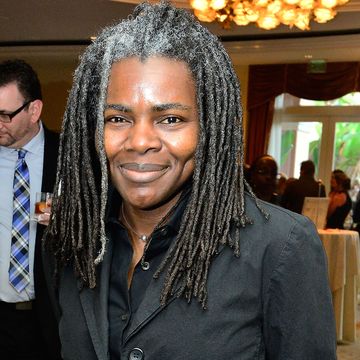
Tracy Chapman

Sinéad O’Connor

How Austin Butler Landed the Part of Elvis

11 Rare Vintage Photos of Lou Reed

Elvis Presley’s Family Tree
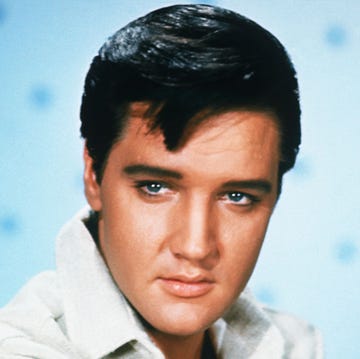
Elvis Presley
How The Rolling Stones Were First Formed

Bruce Springsteen
- Skip to Main Menu
- Skip to Main Content
- Notable Equipment
- Record Labels
- Additional Artists
- Things I Like

Discography
- Search Please fill out this field.
- Newsletters
- Sweepstakes
George Tickner, co-founder and rhythm guitarist of Journey, dies at 76
The musician co-wrote several songs on the band's first three albums before departing to get his Ph.D at Stanford University.
Emlyn Travis is a news writer at Entertainment Weekly with over five years of experience covering the latest in entertainment. A proud Kingston University alum, Emlyn has written about music, fandom, film, television, and awards for multiple outlets including MTV News, Teen Vogue , Bustle, BuzzFeed, Paper Magazine , Dazed, and NME. She joined EW in August 2022.
George Tickner, a co-founding member and the original rhythm guitarist of Journey , has died. He was 76.
His former bandmate Neal Schon announced the musician's death in an Instagram video that featured him playing guitar in Tickner's honor on Thursday. "Some smooth Strat to EZzzzzzz your soul. Prayers for George," he captioned the post. "Farewell old friend." The video was reposted in a story on Journey's official Instagram account later that day.
Schon also paid tribute to Tickner's legacy in a poignant Facebook statement. "Journey Junkies, I have some very sad news. George Tickner, Journey's original rhythm guitarist and songwriting contributor on their first three albums, has passed away," he wrote. "Godspeed, George… Thank you for the music."
Alongside a separate image, Schon added, "Rest peacefully, Dr. George Tickner… you will be missed immensely! Thank you for your incomparable contributions to Journey's early years. The reason he left Journey was to attend Stanford University on a full scholarship, earning his Ph.D. Fly free above the stars, sir… Herbie's waiting to greet you."
Representatives for Journey did not immediately respond to EW's request for more information.
Tickner founded Journey alongside Schon, Prairie Prince, Gregg Rolie, and Ross Valory (he had previously played with the latter in the psychedelic band Frumious Bandersnatch) in February 1973. The San Francisco band held their first-ever public performance at the city's historic Winterland Ballroom on New Year's Eve that year and would go on to dominate the airwaves with hits like "Don't Stop Believin'," "Separate Ways," and "Faithfully."
In addition to serving as Journey's rhythm guitarist, Tickner co-wrote and composed several songs on their first three albums, including "Of a Lifetime," "Topaz," "Mystery Mountain," "You're on Your Own," and "I'm Gonna Leave You."
Although he left the group to study medicine, Tickner remained in close contact with his former bandmates. He and Valory co-founded a recording studio called The Hive and performed together, alongside fellow Journey alum Stevie 'Keys' Roseman, in the band VTR. They released an album, Cinema , in 2005.
Tickner later reunited with Journey when the band received its star on the Hollywood Walk of Fame in 2005.
Related content:
- Stars we've lost in 2023
Related Articles
- Search Please fill out this field.
- Manage Your Subscription
- Give a Gift Subscription
- Newsletters
- Sweepstakes
- Entertainment
Jon Bon Jovi Reflects on the Band's 40-Year Legacy and Roller-Coaster Journey: 'I Have Great Pride' (Exclusive)
The beloved rocker reminisces on Bon Jovi’s impact — and future — ahead of the April 26 release of the Hulu documentary, 'Thank You, Goodnight'
:max_bytes(150000):strip_icc():format(webp)/Jeff-Nelson_selects-10-85889a30a8544ebba85c86033bc5b46a.jpg)
Jon Bon Jovi is looking back on 40 years of rock stardom, how he got here — and what’s next.
More than four decades ago, Bon Jovi worked as a go-fer at the N.Y.C. recording studio the Power Station.
“The biggest thing I learned there was the bigger the star, the nicer the person,” he says. “It was the Rolling Stones who would hold the door open for you when you were coming in with the burgers and the coffee.”
Then an aspiring musician, Bon Jovi notes he “wasn’t rubbing elbows with the Rolling Stones, but while you were sweeping the floor or parking their car, you would observe. The bigger stars would take a moment to say, ‘How’s that demo going?’ That stayed with me.”
Jon Bon Jovi family archive
Within a few years, Bon Jovi went from running errands to releasing his eponymous band’s breakout hit “Runaway” — and soon joining the ranks of the guitar heroes he saw at the Power Station.
“I was willing to outwork everybody — I think that’s what it came down to,” says Bon Jovi, 62. “I definitely wasn’t the best at anything. I was just the hardest working, and it was nothing more than the desire to get better every day.”
Ebet Roberts/Getty
Now the Bon Jovi frontman and his bandmates are looking back at their journey from suburban New Jersey dreamers to one of the biggest, most beloved rock acts of all time in the new four-part docuseries Thank You, Goodnight: The Bon Jovi Story (streaming on Hulu April 26). The show gives a behind-the-scenes look at their meteoric rise and impressive endurance — along with no-holds-barred commentary on their tumultuous ride, including members’ substance abuse issues and Richie Sambora’s sudden departure.
Bon Jovi also details how recent vocal cord issues nearly forced him into retirement and led him to a new outlook on life.
Jake Chessum
“The thing that gave me so much pleasure had been taken away,” he says. “Joy is something you got to work at, right? Happiness is what you make it. It’s not about seizing the day anymore. I think it’s about embracing the day. I don’t have to punch it in the face anymore, now I just give it a hug, and that’s a good place to be.”
Born John Francis Bongiovi Jr. to his barber father and florist mother Carol (both former Marines), Bon Jovi began playing guitar after he caught the bug from a neighbor in Sayreville, N.J. Inspired by area artists like Bruce Springsteen and the E Street Band, he started playing on the Asbury Park music scene.
After breaking out in 1984, the band Bon Jovi — rounded out by guitarist Sambora, keyboardist David Bryan, bassist Alec John Such and drummer Tico Torres — cemented their status as rock gods two years later with their album Slippery When Wet and its smash hits “You Give Love a Bad Name” and “Livin’ on a Prayer.”
Bon Jovi has sold more than 130 million albums worldwide and toured over 50 countries, picking up a Grammy and scoring a Rock & Roll Hall of Fame induction along the way. Those accolades were hard earned. Despite their radio and touring success, the band constantly felt the need to prove themselves over the years because they crossed genres and weren’t critical darlings.
“The only way to really prove something like that,” he says, “is just go out there and do it, do it again and do it again.”
And so they did, becoming one of the highest-grossing touring acts of all time.
Adds keyboardist Bryan: “We were relentless young men who set out to make it — and we made it.”
But in 2022, Bon Jovi thought his performing days might be behind him. Having dealt with vocal cord issues for years, he realized he had to get medical help or retire. Nearly two years since he underwent surgery to alleviate loose vocal folds that were stealing his voice, Bon Jovi is on the mend — and hopeful. The band will drop its 16th album, Forever , in June.
After weathering the ordeal, Bon Jovi says the new record “is really about my finding joy again. What really matters in a life? It’s love and loyalty and finding things that make you want to get up out of bed in the morning.”
Mark Seliger
The rocker has plenty to live for. He has been married to wife Dorothea for 35 years, and they share four children, Stephanie, 30, Jesse, 29, Jake, 21, and Romeo, 20.
“I look back at the accomplishments of the band, and my family,” he says, “and I feel great pride.”
And Bon Jovi is now living by the advice he’d give his younger self working at the recording studio: “Take the time to enjoy every phase of it. Some of it was with my head down, staring at the pavement in front of my next step. I could have looked up and saw the sun shining and the clouds in the sky,” he says. “That’d be the only thing I would tell a young kid today. ‘Enjoy that walk.’”
For more from Jon Bon Jovi, pick up the latest issue of PEOPLE, on newsstands everywhere Friday.
Related Articles
5 best first-round draft picks in Dolphins history

The Miami Dolphins could change their fortunes for the foreseeable future with the No. 21 pick in Thursday's opening round of the NFL Draft. Here's a look at five touchdowns the Dolphins have scored on the first day.
Dan Marino, QB, Pittsburgh, No. 27, 1983

This is an obvious one. Marino fell into Miami's lap with the 27th pick in the 1983 draft after a ho-hum senior season at Pittsburgh and rampant rumors of drug use. Five other quarterbacks were picked ahead of Marino, but it didn't take long for other NFL teams to realize that Dan was the man.
Marino replaced an injured David Woodley as the starting quarterback six games into his rookie season and was named the NFL's offensive rookie of the year and selected to the Pro Bowl after posting a 96.0 passer rating and leading the Dolphins to the playoffs. Marino guided the team to a 14-2 record and a spot in the Super Bowl during the 1984 season. He was the NFL's passing yards leader on five separate occasions and led the NFL in passing touchdowns for three consecutive seasons. Marino battled back from a season-ending injury in 1993 to become the NFL's comeback player of the year in 1994.
The nine-time Pro Bowl player threw for 3,000-plus yards in 13 of his 17 seasons in the NFL. By the time he announced his retirement in March 2000, Marino accounted for 61,361 passing yards and 420 passing touchdowns. The one glaring knock on an otherwise illustrious career is that he never won a Super Bowl. But there is no denying the impact he made on the franchise.
Inducted into the Pro Football Hall of Fame in 2005, Marino had his No. 13 jersey retired during halftime of a Dolphins game in 2003. A statue of Marino outside Hard Rock Stadium remains a favorite backdrop for fan photos.
Larry Csonka, FB, Syracuse, No. 8, 1968

Not only was Csonka the greatest fullback in Dolphins history, but he is arguably the greatest at his position in NFL history. Csonka was the eighth pick of the 1968 draft, but his rise to stardom came when Don Shula was hired as head coach in 1970.
Csonka never missed a game from 1970 to 1974 and led the Dolphins in rushing for five straight seasons, including Miami's back-to-back Super Bowl teams. Csonka left to play for the fledgling World Football League with the Memphis Southmen in 1975 but returned to the NFL in 1976, signing with the New York Giants. He returned to Miami for his final season in 1979.
Csonka, whose No. 39 was retired in 2002, rushed for 8,081 yards and 64 touchdowns in 11 NFL seasons and was inducted into the Pro Football Hall of Fame in 1987.
RELATED: 5 best first-round draft picks in NFL history
Bob Griese, QB, Purdue, No. 4, 1967

Griese was the starting quarterback for the Dolphins when they won back-to-back Super Bowls after the 1972 and 1973 seasons.
The six-time Pro Bowl player was also the NFL's most valuable player in 1971 and the NFL's passing touchdowns leader in 1977.
Griese, who was inducted into the Pro Football Hall of Fame in 1990, spent his entire career with the Dolphins, retiring after the 1980 season.
In 11 seasons, Griese passed for 25,092 yards and threw for 192 touchdowns. The Dolphins retired his No. 12 during a 1985 "Monday Night Football" game.
Richmond Webb, OT, Texas A&M, No. 9, 1990

The ninth pick of the 1990 draft anchored Miami's offensive line for more than a decade.
Webb set team records with 118 consecutive starts and seven consecutive Pro Bowl appearances in 11 seasons with the Dolphins.
He spent the 2001 and 2002 seasons with the Cincinnati Bengals and signed a one-day contract to retire as a Dolphin in 2005.
O.J. McDuffie, WR, Penn State, No. 25, 1993

Miami's 1993 first-round draft pick spent his entire NFL career with the Dolphins, amassing 415 catches for 5,074 yards and 29 touchdowns in eight seasons.
As a rookie, McDuffie racked up 755 kick return yards and 317 punt return yards. He also returned two punts for touchdowns.
McDuffie was one of quarterback Dan Marino's favorite targets and led the NFL with 90 receptions in 1998. He retired after the 2000 season.
You've seen the five best. Now look at the five biggest first-round blunders the franchise has ever made.
Scripps Only Content 2024

Former Atlanta Braves player hopes to be signed for 1 day to receive pension

Man 'recklessly speeding' in DUI crash that killed 3, including 16-year-old

Stowaway cat shipped 650 miles from home in Amazon box

‘Overwhelming:’ Palm Beach Lakes girls basketball coach honored for 525 wins

‘I had no idea’: Woman finds $1M lottery ticket hidden in Tupperware container
Latest news.

Could you afford your home if you were buying it today?

Mental health training ‘still a priority’ in law enforcement community

New Moms Connect in Palm Beach County helping mothers in need

20K fentanyl pills found disguised as wrapped presents

Disabled Golf Association players endure 'emotional' journey
THE BEST OF ST.PETERSBURG WITH THE BEST GUIDES Professional licenced tour guides. Individual and group tours, tailor-made itineraries.
CHEAP FLIGHTS TO LOS ANGELES Flying has never been so affordable! Now you can save up to 65% on cheap flights to Los Angeles year round.
- Share full article
For more audio journalism and storytelling, download New York Times Audio , a new iOS app available for news subscribers.

- April 25, 2024 • 40:33 The Crackdown on Student Protesters
- April 24, 2024 • 32:18 Is $60 Billion Enough to Save Ukraine?
- April 23, 2024 • 30:30 A Salacious Conspiracy or Just 34 Pieces of Paper?
- April 22, 2024 • 24:30 The Evolving Danger of the New Bird Flu
- April 19, 2024 • 30:42 The Supreme Court Takes Up Homelessness
- April 18, 2024 • 30:07 The Opening Days of Trump’s First Criminal Trial
- April 17, 2024 • 24:52 Are ‘Forever Chemicals’ a Forever Problem?
- April 16, 2024 • 29:29 A.I.’s Original Sin
- April 15, 2024 • 24:07 Iran’s Unprecedented Attack on Israel
- April 14, 2024 • 46:17 The Sunday Read: ‘What I Saw Working at The National Enquirer During Donald Trump’s Rise’
- April 12, 2024 • 34:23 How One Family Lost $900,000 in a Timeshare Scam
- April 11, 2024 • 28:39 The Staggering Success of Trump’s Trial Delay Tactics
The Crackdown on Student Protesters
Columbia university is at the center of a growing showdown over the war in gaza and the limits of free speech..
Hosted by Michael Barbaro
Featuring Nicholas Fandos
Produced by Sydney Harper , Asthaa Chaturvedi , Olivia Natt , Nina Feldman and Summer Thomad
With Michael Simon Johnson
Edited by Devon Taylor and Lisa Chow
Original music by Marion Lozano and Dan Powell
Engineered by Chris Wood
Listen and follow The Daily Apple Podcasts | Spotify | Amazon Music
Columbia University has become the epicenter of a growing showdown between student protesters, college administrators and Congress over the war in Gaza and the limits of free speech.
Nicholas Fandos, who covers New York politics and government for The Times, walks us through the intense week at the university. And Isabella Ramírez, the editor in chief of Columbia’s undergraduate newspaper, explains what it has all looked like to a student on campus.
On today’s episode
Nicholas Fandos , who covers New York politics and government for The New York Times
Isabella Ramírez , editor in chief of The Columbia Daily Spectator

Background reading
Inside the week that shook Columbia University .
The protests at the university continued after more than 100 arrests.
There are a lot of ways to listen to The Daily. Here’s how.
We aim to make transcripts available the next workday after an episode’s publication. You can find them at the top of the page.
Research help by Susan Lee .
The Daily is made by Rachel Quester, Lynsea Garrison, Clare Toeniskoetter, Paige Cowett, Michael Simon Johnson, Brad Fisher, Chris Wood, Jessica Cheung, Stella Tan, Alexandra Leigh Young, Lisa Chow, Eric Krupke, Marc Georges, Luke Vander Ploeg, M.J. Davis Lin, Dan Powell, Sydney Harper, Mike Benoist, Liz O. Baylen, Asthaa Chaturvedi, Rachelle Bonja, Diana Nguyen, Marion Lozano, Corey Schreppel, Rob Szypko, Elisheba Ittoop, Mooj Zadie, Patricia Willens, Rowan Niemisto, Jody Becker, Rikki Novetsky, John Ketchum, Nina Feldman, Will Reid, Carlos Prieto, Ben Calhoun, Susan Lee, Lexie Diao, Mary Wilson, Alex Stern, Dan Farrell, Sophia Lanman, Shannon Lin, Diane Wong, Devon Taylor, Alyssa Moxley, Summer Thomad, Olivia Natt, Daniel Ramirez and Brendan Klinkenberg.
Our theme music is by Jim Brunberg and Ben Landsverk of Wonderly. Special thanks to Sam Dolnick, Paula Szuchman, Lisa Tobin, Larissa Anderson, Julia Simon, Sofia Milan, Mahima Chablani, Elizabeth Davis-Moorer, Jeffrey Miranda, Renan Borelli, Maddy Masiello, Isabella Anderson and Nina Lassam.
Nicholas Fandos is a Times reporter covering New York politics and government. More about Nicholas Fandos
Advertisement
StarTribune
Kevin o'connell's qb journey. the next phase begins right now.
Whenever he's asked for his thesis on the most important position in football, Kevin O'Connell returns almost invariably to the topic of a quarterback's journey. He speaks about it with a fascination that only seems to have grown the longer he's staked his career on it.
O'Connell turns 39 on May 25, the weekend after he will have ostensibly coached a rookie quarterback through the Vikings' first week of organized team activities. He is 17 months younger than Aaron Rodgers, the NFL's oldest current starting quarterback. Had O'Connell's career taken a different path after the Patriots made him a third-round pick in 2008, he could be one of the NFL's oldest players, rather than one of its youngest head coaches. There is no bitterness in his voice as he reflects on the pivot, only wonder at the mystical process that remains so difficult to nail and could soon shape the Vikings' future.
As he sat at a table overlooking the sprawling lawn at the Ritz-Carlton Grande Lakes in Orlando during the NFL owners' meetings on March 25, O'Connell said, "I always use a loose, light term with my own [career], calling it a 'quarterback journey,' but it was one nonetheless."
The conversation shifted to Sam Darnold, the third overall pick in 2018 who signed a one-year deal to make the Vikings his fourth franchise in seven years. O'Connell said Darnold, still just 26, could flourish given the right environment. The Vikings, with former quarterbacks layering the coaching staff and Pro Bowlers doing the blocking and receiving, could provide that environment.
"Quarterbacks can be at different phases, parts of their career that maybe don't always align with performing for three and a half hours on Sunday," he said. "If you go through the process and get around some good coaches, which I think Sam was in San Francisco, [you can grow]. … As a young quarterback, or really any sort of quarterback coming into our situation, I do feel strongly about the opportunity we can offer."
The true test of O'Connell's theory, of course, is not likely to be Darnold. It could arrive as soon as Thursday night, if the Vikings draft the quarterback for whom they've been planning practically since O'Connell and General Manager Kwesi Adofo-Mensah arrived in Minnesota in 2022. They have scouted the 2024 draft class for two years , making only temporary commitments to Kirk Cousins in the meantime and stopping short of the move up for a quarterback they contemplated in the 2023 draft in part because they knew the promise this class held. They let Cousins leave in free agency, acquired the No. 23 pick from Houston to go with their 11th overall choice and put at least a half-dozen quarterbacks through a pre-draft process O'Connell designed .
Thursday could be the consummation of that process, especially if the Vikings trade up even one spot from No. 11 to take the highest-drafted quarterback in franchise history. But it could also be a commencement of sorts, with O'Connell at the top of an infrastructure that seems as precisely engineered for quarterback development as the Vikings could hope.
The Vikings have drafted a quarterback in the first round just four times in franchise history . The last time they paired a first-round QB with an offensive head coach was 1999, when Dennis Green took Daunte Culpepper 11th overall.
Christian Ponder, selected 12th in 2011, flailed under a coaching staff (led by Leslie Frazier) that never seemed to be in lockstep with the front office. Teddy Bridgewater, the 32nd overall pick in 2014, was turning into an effective game manager for a defensive-minded head coach (Mike Zimmer) before a 2016 knee injury rattled his career trajectory.
O'Connell was hired to replace Zimmer and embraced Cousins, winning a division title with him in 2022 and forming a close partnership with the quarterback. But it seemed only a matter of time until the Vikings would entrust the position's future to the head coach they'd hired to safeguard it.
O'Connell backed up Tom Brady, studied under Bill Belichick and speaks about his own short-lived career with enough wry humor that suggests he's used it as a reference for young QBs hoping to avoid similar pitfalls. This winter, he hired Josh McCown , a 17-year NFL veteran who played for nine teams and for O'Connell in the latter's first NFL QB coach job in Cleveland, to inject quantities of detail and institutional knowledge into a rookie's instruction that could only come from a player with his experience.
Offensive coordinator Wes Phillips comes from a three-generation NFL family and won a Super Bowl with the Rams and O'Connell under Sean McVay. So did former quarterbacks coach Chris O'Hara, who is still on staff as a senior offensive assistant and pass game specialist. Assistant QB coach Grant Udinski, viewed as a rising star on the Vikings' staff, figures to provide the kinds of extra hours-long teaching sessions that have made him a trusted resource for the team's quarterbacks.
A rookie would join a quarterback room with two veterans, including one (Darnold) who knows about beginning a career atop the NFL QB high wire. He would throw to Justin Jefferson, Jordan Addison and (eventually) T.J. Hockenson , hand off to Aaron Jones and be protected by Christian Darrisaw and Brian O'Neill. The Vikings, it seems, have put in as many trail guides and signposts as possible to help a young quarterback along the journey O'Connell speaks so much about.
The question is, will it work?
Since the start of the Super Bowl era in 1966, there have been 102 quarterbacks selected in the first 10 picks of the draft. While more than half of those players (52) have reached a Pro Bowl, just 13 have earned first-team All-Pro honors in their careers, and only eight are in the Hall of Fame (though quarterbacks like Patrick Mahomes figure to raise that total).
The numbers underscore what O'Connell has witnessed and lived: there are enough pitfalls along the way that the QB journey is rarely flawless.
"Every quarterback goes to different environments, different systems, different organizations, and that path is not the same for every player," O'Connell said last week. "The timeline of when they're reaching their early peak of their rookie contract, when it's so valuable to have a rookie because of all the financial terms, that's one thing. But you also want to make sure that you're developing and doing what's best for the player. We just happen to have a really good situation, in my opinion, with the players we have in that huddle, the guys that are going to be coaching that player. Then ultimately, what we hope [we have] is a long-term plan to have a really special player at the position.
"But all that can't happen without a daily process where you're attacking and understanding what you need to get better at, how the NFL game may be different than the college level and what that system was like versus what we'll do. I think there's a lot of ways you can look at different strengths of different players in the draft and say, 'You can make a pretty good projection that high-quality quarterback play could be in their future.' But there's a lot of work and time and effort to help them get there."
The Vikings have completed some of that work: scouting prospects, building a QB-friendly coaching staff and outfitting the roster with offensive weapons. The most important work, though, could be days — maybe even hours — from starting.
The next quarterback journey O'Connell oversees could, one way or the other, change the course of the franchise.

- Vikings mock draft: seven rounds, eight picks and, yes, one quarterback
Ben Goessling covers the Vikings for the Star Tribune. He has covered the team since 2012, and has previously covered the Twins, Wild, Washington Nationals and prep sports.
- 911 transcript gives more detail of Sen. Mitchell's alleged burglary
- Prosecutor shake-up in Mary Moriarty's office in murder case against State Trooper Ryan Londregan
- Minneapolis approves $15 minimum for cigarette packs, highest in U.S.
Five home runs, including two by Julien, power Twins past White Sox
- A wild week in restaurants with 4 closings and an opening
Is this the most important draft pick in Vikings history?
Gary sánchez pinch hits for 2-run homer in 8th; brewers rally for 7-5 win, series split with pirates.

Anti-doping watchdog asks Swiss prosecutor to review its handling of Chinese Olympic swimming case
Massive policing for paris olympics to include security checks for some of the capital's residents.
- The three most absurd Vikings rumblings in their draft lead-up Apr. 24
- Vikings mock draft: seven rounds, eight picks and, yes, one quarterback 6:21am
- Mark Craig's mock draft: QBs, trades and the Vikings take . . . Apr. 24
- Scoggins: Worried about costly trade to draft a quarterback? Don't be. 6:17am
© 2024 StarTribune. All rights reserved.
- Bahasa Indonesia
- Slovenščina
- Science & Tech
- Russian Kitchen
A ride across passages of history - Moscow Metro rolls on

Click on the map to enlarge it
Lying at a depth of 5 (Pechatniki station) to 80 metres (Park Pobedy station), the history of the last eight decades unfold before your eyes, carved out of marble and granite and built in iron and glass – revealing the tastes, ideas, dreams, hopes and disappointments of the previous generations and contemporaries. The Moscow Metro dates back to 1931, when its construction first began, although engineers Pyotr Balinsky and Evgeny Knorre submitted their first designs to the Moscow City Duma as far back as 1902. “His speeches carried a strong temptation: like a true demon, he would promise to cast Moscow down to the bottom of the sea and raise it above the clouds”, a journalist for the Russkoye Slovo newspaper commented on Balinsky’s idea. Yet the Duma, made up of rich people, did not bite the bait: after all, they all lived in the centre of the city and never rode overcrowded trams.
After five failed proposals before the Duma, the Moscow Metro finally threw open its doors on May 15, 1935, 18 years after the revolution, and carried the first passengers on its moving staircases, escalators, and the padded seats of its new wagons (unlike the wooden seats in trams). The first metro line – from Sokolniki to Dvorets Sovetov (now known as Kropotkinskaya) -- was 11 km long and had 13 stations. Now, the Moscow Metro has a track of over 300 km with 12 lines and 182 stations. The city’s development outline for 2020 envisages that, by then, another 120 km will have been added to the existing routes.
For the first 20 years of its history, the Moscow Metro was named after Lazar Kaganovich, the “iron commissar” and Stalin’s right hand man, who was in-charge of construction of the first stage of the metro (incidentally, he personally blew up the Cathedral of Christ the Saviour in December 1931 as a part of the Proletarian Capital project). In 1955, however, the Metro was renamed after Vladimir Lenin. Although Russia has long since changed its political track, you can still find the images of the former leader at over 10 stations, including, for instance, busts of Lenin at Belorusskaya and Komsomolskaya stations, impressive mosaics at Baumanskaya and Kievskaya stations, a tile panel in the passage between the Borovitskaya and Biblioteka Imeni Lenina stations. By a bitter irony of fate, Lenin’s full-face and side-face images decorate the Tsaritsyno (translated as the Tsarina’s Estate) station (dubbed Lenino up until 1990) – images of the very person who ordered the shooting of the royal family. You will not, however, find any images of Stalin in Moscow’s underground. A symbol of Russia's victory, he was omnipresent in the late 1940s. After his death in 1953 and the denunciation of Stalin’s personality cult, his images were gradually withdrawn from the Moscow Metro.
“Architecture developed along the same lines, both above and below the surface. Anything that emerged above ground had a reflection underground. It is equally true that vice versa never occurred: good architecture underground but bad architecture above the ground,” says Nikolay Shumakov, chief architect of the Moscow Metro. The first metro stations, up until the mid-1950s, were conceived and built as luxurious “palaces for the people”, great architecture for a great state. Art historians insist that the richly-decorated underground was a deliberate ideological move to eulogise the young Soviet country. Stations built between 1937 and 1955 are characteristic of the first architectural period. Everything completed at this time is worthy of special attention. For instance, look at the ceiling at Mayakovskaya and Novokuznetskaya stations to see mosaic panels based on designs by artist Alexander Deineka – 24-Hour Soviet Sky and Heroic Labour of the Soviet People on the Home Front. The mosaics were assembled by famous mosaic artist Vladimir Frolov, author of the mosaic icons in St. Petersburg’s Church of the Saviour on Blood. The Ploshchad Revolutsii station was decorated with 76 bronze sculptures of workers, soldiers, farmers, students and other Soviet people. You can even find a frontier guard with a dog and rub its nose for good luck. You may also note that all the figures (except pioneers) are either sitting or bent, which engendered the sad joke – “Any Soviet man is either in jail or on his knees.”
Elements of decoration in Moscow's metro. Photos by Alexandr Ganyushin
1955 heralded the end of the good times for Russian architecture – both underground and above ground – after the Communist Party issued a decree "On elimination of extravagance in design and construction.” Dull stations, without any stucco work, mosaics, original columns or other “unjustified” elements, were built under the slogan “Kilometres at the expense of architecture”. Things were the same above the ground, where entire cities were built of commonplace five-storey apartment blocks, all looking the same, nicknamed ‘Khrushchevkas’ after the then leader, Nikita Khrushchev. To get a sense of this period’s architecture, see the few stations built in the 1960s-1980s like Tverskaya, Kitay-Gorod and Kolomenskaya. In 2002, with the reconstruction of the Vorobyovy Gory station, the development of the Moscow Metro entered a third stage, which could be defined as ‘renaissance’. The platform of the station offers a splendid view of the Moskva River, the Luzhniki Olympic Complex and the Academy of Sciences building. Architectural canons of the 1930s-1940s were once again in use in the design of underground stations. By the same token, artists once again become involved in decorating the stations. As such, the Sretensky Bulvar station boasts silhouettes of Pushkin, Gogol, and Timiryazev and Moscow sights; the Dostoevskaya station is decorated with black-and-white panels featuring the main characters from Dostoyevsky’s novels The Idiot, Demons, Crime and Punishment, The Brothers Karamazov, and the Maryina Roshcha station flaunts its pastoral mosaic landscapes. In 2004, Russia's first monorail transport system was launched into service – an elevated track (running 6 to 12 metres above the ground) in the northern part of Moscow, linking the All-Russian Exhibition Centre and the Timiryazevskaya metro station. The evolution of the Moscow Metro goes on. It’s still a work in progress, with ambitious plans to move the Moscow Metro even closer to passengers over the next ten years, not just by adding an extra 120 km to its total track. “We want to strip the stations of everything we can,” says Nikolai Shumakov. “We are trying to show the passengers their very framework, what the metro is made of. Cast iron and concrete are beautiful.”
Joy ride: Read Gogol, Dante or savour art

The Aquarelle Train. Source: Reuters/Vostock-Photo
With any luck, you can ride in a retro train, a moving art gallery or a library. The trains are actually a part of the general traffic (i.e., they do not run to any special schedule) and are used on certain lines. The Reading Moscow Train , an ordinary train on the face of it, features extracts from literary works for adults and children. Each wagon has its own selection, from children’s fairy tales to Gogol. Circle Line. The Poetry in Metro Train carries an exposition, updated this year, dedicated to Italian poets Dante Alighieri, Francesco Petrarch, Giacomo Leopardi, etc. All the poems are featured in two languages, Russian and Italian. Filevskaya Line. The Sokolniki Retro Train looks exactly like the first Moscow Metro train, both inside and out. Painted brown, it has padded seats, typical wall decorations and retro lamps. Sokolnicheskaya Line. The Aquarelle Train looks like a cabinet painted with flowers and fruit on the outside. Inside, it is an art gallery featuring art reproductions from the Vyatka Apollinary and Viktor Vasnetsov Art Museum. Arbatsko-Pokrovskaya Line.
Revolution Square station (built in 1938) is close to the Red Square area. There are 72 sculptures in the station, depicting the people of the Soviet Union, including soldiers, farmers, athletes, writers, industrial workers and school children.
All rights reserved by Rossiyskaya Gazeta.
to our newsletter!
Get the week's best stories straight to your inbox
This website uses cookies. Click here to find out more.

Russia's Nuclear Deterrent Command Center Imperiled by Winter Freeze—Report
A Russian nuclear deterrent command center in Moscow has been imperiled by power outages that have impacted more than one-quarter of the region's cities amid freezing temperatures, a Russian Telegram channel has reported.
The VChK-OGPU outlet, which purports to have inside information from Russian security forces, reported that the 820th Main Center for Missile Attack Warnings—part of the Russian Space Forces, a branch of the country's Aerospace Forces—near Solnechnogorsk in Moscow is without power.
It serves as the space forces early warning network against potential ballistic missile attacks.
The development comes as Russians are reported to be suffering from power outages in their homes in the Moscow region caused by technical issues at plants amid subzero temperatures.
On January 4, a heating main burst at the Klimovsk Specialized Ammunition Plant in the town of Podolsk, which is about 30 miles south of central Moscow. Since then, tens of thousands of Russians are reported to have no heating in their homes.
Affected areas include the cities of Khimki, Balashikha, Lobnya, Lyubertsy, Podolsk, Chekhov and Naro-Fominsk, a map published by a Russian Telegram channel and shared on other social media sites shows.
Other Russian media outlets reported that in Moscow, residents of Balashikha, Elektrostal, Solnechnogorsk, Dmitrov, Domodedovo, Troitsk, Taldom, Orekhovo-Zuyevo, Krasnogorsk, Pushkino, Ramenskoye, Voskresensk, Losino-Petrovsky and Selyatino are also without power.
The Telegram channel said that at the 820th Main Center for Missile Attack Warnings, "the crew...is on duty around the clock."
"It is here that the decision on a retaliatory nuclear strike is executed," the channel said.
Newsweek could not independently verify the report and has reached out to the Russian Defense Ministry by email for comment.
Power outages have also been reported in Russia's second-largest city, St. Petersburg, in the country's western Voronezh region, in the southwest city of Volgograd, and in Rostov, which borders Ukraine, a country that Russia has been at war with since February 24, 2022.
On Sunday, two shopping malls in St. Petersburg were forced to close because of problems with light and heating, reported local news outlet 78.ru. Hundreds of other homes in the city have had no electricity, water or heating for days amid temperatures of -25 C (-13 F).
Russian authorities have also been forced to compensate passengers of a train that ran from Samara to St. Petersburg (a 20-hour journey) without heating during -30 C (-22 F) temperatures. Videos circulating on social media showed carriage windows frozen over. A passenger also said the toilet didn't work during the trip because of frozen pipes.
Do you have a tip on a world news story that Newsweek should be covering? Do you have a question about the Russia-Ukraine war? Let us know via [email protected].
Related Articles
- Russia Maps Show 25% of Moscow Without Power Amid Winter Freeze 'Emergency'
- Serbian Mercenary Turns on Russian Leaders: 'They Treat Us Like Cattle'
- Winter Freeze Threats Come Back To Bite Russia As Power Outages Spread
Start your unlimited Newsweek trial

- 2024 Commits
- FanNation FanNation FanNation
- SI.COM SI.COM SI.COM
- SI SWIMSUIT SI SWIMSUIT SI SWIMSUIT
- SI Sportsbook SI Sportsbook SI Sportsbook
- SI Tickets SI Tickets SI Tickets
- SI Showcase SI Showcase SI Showcase

© Kirby Lee-USA TODAY Sports
Could Oregon Ducks Bo Nix Help Make NFL Draft History?
Bo Nix, a standout quarterback from the Oregon Ducks, is poised to become a ProDuck in the 2024 NFL Draft.
- Author: Grant Afseth
In this story:
Bo Nix , a standout quarterback from the Oregon Ducks , is poised to become a ProDuck in the 2024 NFL Draft. Although Nix will not attend the draft in Detroit, he can make history.
The 1983 NFL Draft holds the record for the most quarterbacks selected in the first round, with six taken. This draft is often considered the greatest quarterback class ever, featuring three Hall of Famers and two of history's most highly esteemed quarterbacks. John Elway, Jim Kelly, Ken O'Brien, and Dan Marino were defining figures in the NFL during the 1980s and '90s. Looking ahead to this season, six quarterbacks might be chosen in the first round, potentially matching that record.
Oregon Legacy

Mar 2, 2024; Indianapolis, IN, USA; Oregon quarterback Bo Nix (QB07) during the 2024 NFL Combine at
Kirby Lee-USA TODAY Sports
After facing intense scrutiny at Auburn, Nix transferred to Oregon to play as a fifth-year senior, seeking a fresh start. He experienced a significant resurgence. Over 12 games, he threw for an impressive 3,384 yards and 27 touchdowns, with a completion rate of 71.4 percent. His running game remained strong, with 507 yards on 87 carries.
Although initially controversial during his time at Auburn, his performance at Oregon solidified his status as a top NFL prospect. With his raw talent, high-level athleticism, and revitalized image, Nix is firmly in the spotlight for the 2024 NFL Draft.
Pro Comparisons
Nix received a pro comparison to former Dallas Cowboys star Tony Romo from NFL.com. Another comparison Nix has often received is to retired New Orleans Saints star Drew Brees, which he has previously said he'd gladly accept.
"Yeah, I've heard quite a few different ones," Nix told Sporting News . "If they want to compare me to Drew Brees, then I'll take it. I think he's an incredible player."
NFL Draft Projections
There is a wide range of potential draft outcomes for Nix. USA TODAY projects a 12th overall selection to the Denver Broncos, while Yahoo Sports and NFL.com, among others, project a Round 2 selection.
What Nix Is Saying
In a recent interview with CBS Sports , Nix was asked to name something that the NFL teams may not know about him that he wants them to know. He chose his passion for the game.
"I don't think they know how passionate and how much I enjoy being a teammate to other guys and how much I enjoy being a part of a team," Nix said. "Putting our talents together to go out there and win games. Football is an ultimate team sport, and I love my teammates and making people better around me and them making me better. The overall group effort to where you sacrifice so much, you put so much into the game and you go out there and you just want to succeed and win on game days."
What Nation Is Saying
One NFC area scout raised the question to NFL.com regarding whether Nix could maintain his same level of impact and confidence outside of Oregon's offense.
“He’s so much more confident than he was when he came in. The only thing you worry about a little bit is how he will respond when he’s outside the comfort of that (Oregon) offense. Does he play with the same confidence?" - NFC area scout
Latest Ducks News
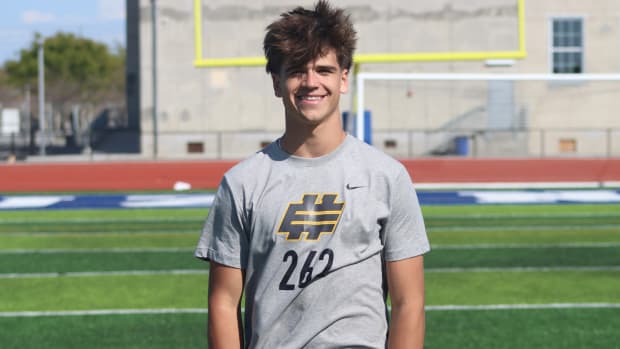
Ryder Lyons Has Strong Interest in Oregon Early On
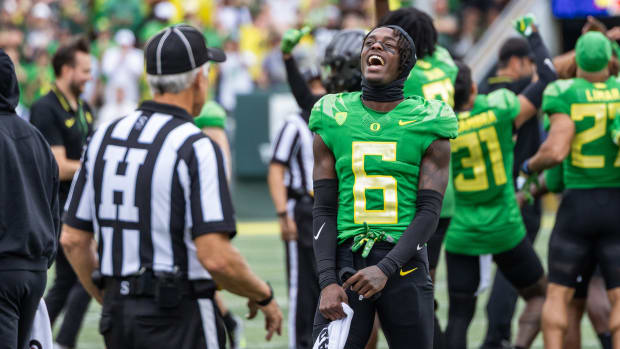
PODCAST: Which Position Group Will Grow the Most in Spring Football?
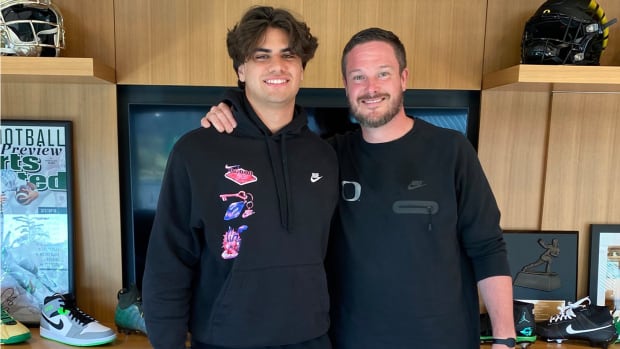
Oregon a 'Top Priority' for Noah Mikhail Following Visit

How Well Do You Know Big Ten Athletic Directors?

'He's ready now;' WR Jurrion Dickey Trending Toward Larger Role in 2024
Will ‘Survivor 46’ Undo Its History-Making Merge With an All-Black Jury?
‘Survivor 46’ is making history with the most Black contestants after the merge.
The Big Picture
- Survivor 46 marks history with most Black castaways post-merge
- Split Tribal Councils show a troubling pattern of Black castaways being voted out
- Challenges persist for Black players in Survivor due to racial bias and strategic gameplay
The new era of Survivor has its controversial changes. But the best one is CBS having 50 percent of the cast being people of color. Since then, we've seen multiple groundbreaking winners. A diverse cast lets people of color play their game without sticking out like a sore thumb just because of having a different background. However, we've seen that some things about the $1 million game have stayed the same.
Survivor 46 started with five Black players spread out over three tribes. The three-tribe format is tough, since it's harder for castaways to hide if they go to the Tribal Council. We've also seen in the new era, the first tribe to lose tends to follow that trajectory. Despite all of that, this season made history in a major way. The season started with Yanu losing multiple times . The cast finally merged in episode 6, with Tiffany Nicole Ervin , Q Burdette , and Kenzie Petty being the remaining Yanu castaways. Siga lost once and voted out Moriah Gaynor , so the remaining three Black players ( Tim Spicer , Tevin Davis , Soda Thompson ) made it to the merge. This is a big deal given the long history of Survivor .
A reality show where a group of contestants are stranded in a remote location with little more than the clothes on their back. The lone survivor of this contest takes home a million dollars.
Survivor 46 Has Most Black Castaways After Merge
Cirie Fields is a legend of the reality show , who didn't have many chances to work with another Black woman until Game Changers . She had Michaela Bradshaw with her and tried to show her the ropes. "You have to control your emotions, and you can't shut down," Cirie advised the younger player. "When everybody else is talking, you can't have that exterior." She said she saw her younger self in Michaela. Michaela admitted the merge was new to her since she was voted out before the jury in Survivor: Millennial vs. Gen X .
It was a touching moment. But it's upsetting to know this was a first for Cirie too, even though she played three times before. She was in the all-women Black Widow Brigade in Micronesia , which was another feat for women in the game. But she was also the only Black woman in it. This season, the first post-merge vote was split between two groups. The cast drew rocks to randomly be divided into two groups of six for the immunity challenge. Two people won immunity, two people were voted out, and one of the losers wouldn't be on the jury. There was a six-person alliance with Q, Maria, Tim, Tiffany, Hunter McKnight , and Tevin. Tim wanted to take out Hunter because he was a threat in challenges. Q didn't like that Tim wanted to go against the alliance, so they voted him out.
RELATED: Wendell Holland Says ‘Survivor 46’s Q Cemented His Spot as a Villain
Nami affected the second group. Soda and Venus Vafa were at odds. But Tevin pushed for Soda to be the vote because she was a great social player. This wasn't a great move for Tevin, since the same argument could be used for himself and Soda was working with him, not against him. In the end, Soda was voted out and became the first juror.
There is a pattern of only Black castaways going home in split Tribal Councils in recent history. James Jones and Ryan Medrano of Survivor 43 , Sifu Alsup and Kaleb Gebrewold of Survivor 45 , came before Soda and Tim of Survivor 46 . The same thing almost happened in Survivor 42. Chanelle Howell was the first juror, and the following episode had the split tribe twist. The first tribe voted out Rocksroy Bailey, who immediately joined her on the jury.
The Split Tribal Councils Have a Troubling Pattern
The next Tribal Council started, and Drea Wheeler looked disturbed by only Black people getting voted out. "I was so proud because we had four Black contestants in Survivor, and then it always happens where at one point, the Black contestants get booted out. Boom, boom, boom," she said. "And then this is exactly what this is right now. So yeah, I'm pissed." Jeff Probst asked if she thought this was race-related. "I think subconsciously a little bit of that, unfortunately," she answered. She announced that she was playing her idol to stay in the game after seeing the jury. Tori Meehan was voted out instead.
That season ends with Maryanne Oketch dazzling the jury with an explanation of her strategy. She became the second Black woman to win Survivor after Vecepia Towery won in 2002. But the show went back to business as usual after that triumph.
The second Tribal Council no longer gets to see who was voted out after this season. So the other season 46's castaways were surprised Tim went out first. Episode 8 showed more Black players were in trouble. Q wanted to target his closest ally, Tiffany, for targeting another member of the six-person alliance. Liz Wilcox led the plan to take out Tevin for wanting all the credit for the Soda vote. As if that wasn't enough, Q threw another wrench into the game at Tribal Council.
Survivor 46: The First Two Jurors Are Black
He asked everyone to vote him out because he wanted to take ownership of a "mistake." The cast looked confused and immediately started strategizing. This meant every remaining Black player in the game was in danger of going home. The majority stuck to the plan and voted out Tevin, meaning the first two jurors were Black. The damage has been done to the remaining Black players.
Q tells allies, Charlie Davis and Maria, about Tiffany's idol, which lessened his power. Q, who seemed to be running things with his alliance and the last vote, has ruined his reputation by asking people to vote him out. His remaining allies will probably want to jump ship. If he makes it to the end, it'll be hard to convince the jury to give him $1 million after betraying his allies and saying he wanted to quit multiple times.
Survivor 46 will have a bittersweet spot in Survivor history with every Black player making it to the merge. Then it falls into the same trappings of them following each other out the door post-merge. All castaways should remember Drea's words about a subconscious bias that could be at play when making these decisions in the game. Lastly, future Black players should stay on their toes when it comes to split tribals because the default has been them going out at this point. Survivor 46 airs Wednesdays at 8:00 pm on CBS. All seasons are available to stream on Paramount+. Watch on Paramount+

IMAGES
VIDEO
COMMENTS
History 1973-1977: Formation, Journey, Look into the Future and Next Neal Schon, the remaining original member of Journey in 2008. The original members of Journey came together in San Francisco in 1973 under the auspices of former Santana manager Herbie Herbert.Originally called the Golden Gate Rhythm Section and intended to serve as a backup group for established Bay Area artists, the band ...
Journey Band Members Over the Years . In 2005, the band (along with original members Schon and Valory) marked its 30th anniversary with the release of its 23rd album, Generations and an anniversary tour, at times featuring some of the many former members of the group.In December 2006, Jeff Scott Soto replaced Steve Augeri as lead vocalist.
Journey is an American rock band from San Francisco, California.Formed in February 1973 as the Golden Gate Rhythm Section, the group was renamed Journey in the summer and originally included keyboardist and vocalist Gregg Rolie, lead guitarist Neal Schon, rhythm guitarist George Tickner, bassist Ross Valory and drummer Prairie Prince.The band's lineup as of 2021 features Schon, alongside ...
Formation of the Band. Journey was formed in 1973 in San Francisco, California, bringing together a group of highly talented musicians. The founding members included Neal Schon, Gregg Rolie, Ross Valory, Aynsley Dunbar, and George Tickner. With their combined musical prowess and creative vision, they set out to create something extraordinary.
Journey's band history is the epitome of 80s rock and the clashes between some of the most extraordinary rock musicians of the time. Like all Journey fans, the first songs I heard were Steve Perry's lead emotional ballads. He was the perfect singer for the ideal backing band. Yet, listening years later as a musician, I understood that it ...
A Long Way To The Top. Unlike other bands from the 1970s, Journey had a pretty weak start in the music industry and it took them years before they broke into mainstream and got the recognition they deserved. They formed in 1973 and released their first album in 1975 which established their sound that fused jazz and progressive rock.
Steve Perry was the lead singer of pop rock band Journey from 1977 to 1987. He is known for having a wide vocal range, which can be heard on such popular hits as "Don't Stop Believin'" and "Oh ...
Journey (band) History 1973-1977: Formation, Journey, Look into the Future and Next 1977-1980: New musical direction, Infinity, Evolution, and Departure 1981-1983: Height of popularity, Escape and Frontiers 1984-1987: Raised on Radio and more personnel changes 1987-1995: Hiatus 1995-1997: Reunion and Trial by Fire 1998-2007: Lead singer and drummer replaced, Arrival and ...
Keys, Songwriting. In 1976 Jonathan Cain released his first solo record, Windy City Breakdown. In 1979 he joined the band, The Babys, and in 1980 joined the rock band, Journey, rounding out the songwriting genius behind the defining album, Escape, which was RIAA certified Diamond this year. Cain's signature piano, synth playing and songwriting ...
Few groups embraced such unprecedented reach with as much enthusiasm and skill as Bay Area-based Journey. The Californians not only rode the tsunami wave with panache, they created a template for bands aspiring to this level of engagement with fans. Most impressive, they are still at it, four decades on. READ. MORE. They didn't even need lyrics.
Journey was formed in 1973 by Santana manager Walter "Herbie" Herbert, with the classic lineup featuring Steve Perry on vocals and Neal Schon on guitar and vocals. The band's self-titled debut albu…
Lead Singers of Journey: 1. Steve Perry (1977-1998) Joined Journey in 1977 and became the band's lead vocalist. Known for his powerful and distinctive voice, he played a pivotal role in the band's success. Perry's tenure with the band lasted until 1998 and included hit albums like "Escape" and "Frontiers.". 2.
Ross Valory, born on February 2, 1949, in San Francisco, California, is an American musician renowned for being Journey's original bass guitarist. He joined the band at its inception in 1973 and contributed to albums like "Journey" (1975), "Infinity" (1978), "Escape" (1981), and many more. Valory played both the bass guitar and ...
2. Singles. 52. Soundtrack albums. 1. American rock band Journey has released 15 studio albums, five live albums, 11 compilation albums, and 52 singles since 1975.
Arnel Pineda was born on September 5, 1967, in Sampaloc, Manila, in the Philippines. Throughout his childhood, Pineda endured grave misfortune. When he was just 13 years old, his mother, who was ...
Journey Concert History. Journey is one of the most influential arena rock bands of the 1970s and '80s. However, the first few years were rough going. Between 1973 and 1976, Journey released three studio albums, all of which failed to meet the expectations of Columbia Records, which nearly dropped the band. In 1977, Steve Perry became the new ...
1973-1987, 1995-present. Genre(s): Classic Rock
The pop-rock band hasn't released a new album in more than a decade, but they still manage to make history on the current edition of the Billboard 200, the chart company's weekly ranking of ...
George Tickner, co-founder and rhythm guitarist of Journey, dies at 76. The musician co-wrote several songs on the band's first three albums before departing to get his Ph.D at Stanford University.
Jon Bon Jovi is looking back on 40 years of rock stardom, how he got here — and what's next. More than four decades ago, Bon Jovi worked as a go-fer at the N.Y.C. recording studio the Power ...
Miami Dolphins wide receiver O.J. McDuffie jumps for joy after catching a Dan Marino pass for a touchdown against the Kansas City Chiefs, Monday, Dec. 11, 1995. Miami's 1993 first-round draft pick spent his entire NFL career with the Dolphins, amassing 415 catches for 5,074 yards and 29 touchdowns in eight seasons.
In the last 25 years, the Vikings have made heavy investments in the position. They chose Daunte Culpepper No. 11 overall in 1999, one of four times they have used a first round pick on a QB in ...
History of the Moscow Metro (see Moscow metro scheme) The Moscow Metro was initially built under the 1930's Moscow general plan designed by Lazar Kaganovich and was named after him ("Metropoliten im. L.M. Kaganovicha"). The first line opened on 15 May 1935 between Sokolniki and Park Kultury. The construction of the first stations was based on ...
The Crackdown on Student Protesters. Columbia University is at the center of a growing showdown over the war in Gaza and the limits of free speech. April 25, 2024, 6:00 a.m. ET. Share full article ...
In the first round of the NFL draft Thursday, the Vikings could make franchise history with a choice coach Kevin O'Connell was hired two years ago to make. Vikings coach Kevin O'Connell, a former ...
Journey is the debut studio album by American rock band Journey.It was released on April 1, 1975, by Columbia Records.Unlike their later recordings, this is a jazzy progressive rock album which focuses mainly on the band's instrumental talents. It is the only album to include rhythm guitarist George Tickner among their lineup.. Journey recorded a demo album prior to the release of Journey ...
Milestones From 13 stations in 1935 to 182 in 2011, Metro also attracts thousands as an underground museum; plans to add another 120 km track by 2020.
Russian authorities have also been forced to compensate passengers of a train that ran from Samara to St. Petersburg (a 20-hour journey) without heating during -30 C (-22 F) temperatures.
Bo Nix. NFL Draft. Oregon Ducks. Oregon Ducks Football. Bo Nix, a standout quarterback from the Oregon Ducks, is poised to become a ProDuck in the 2024 NFL Draft. Although Nix will not attend the ...
His remaining allies will probably want to jump ship. If he makes it to the end, it'll be hard to convince the jury to give him $1 million after betraying his allies and saying he wanted to quit ...